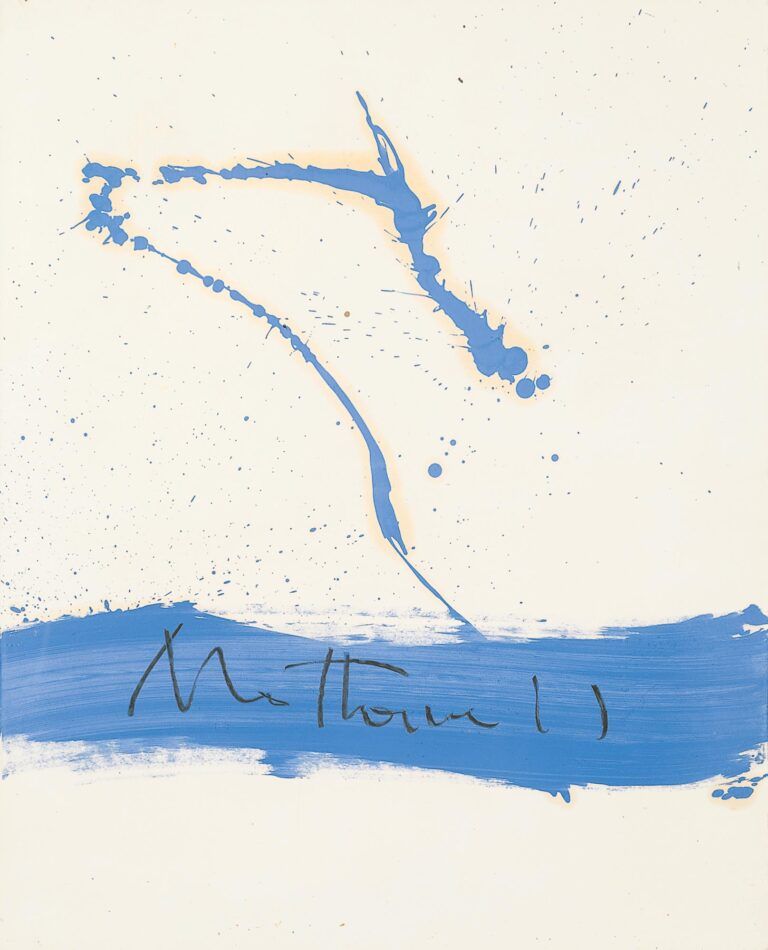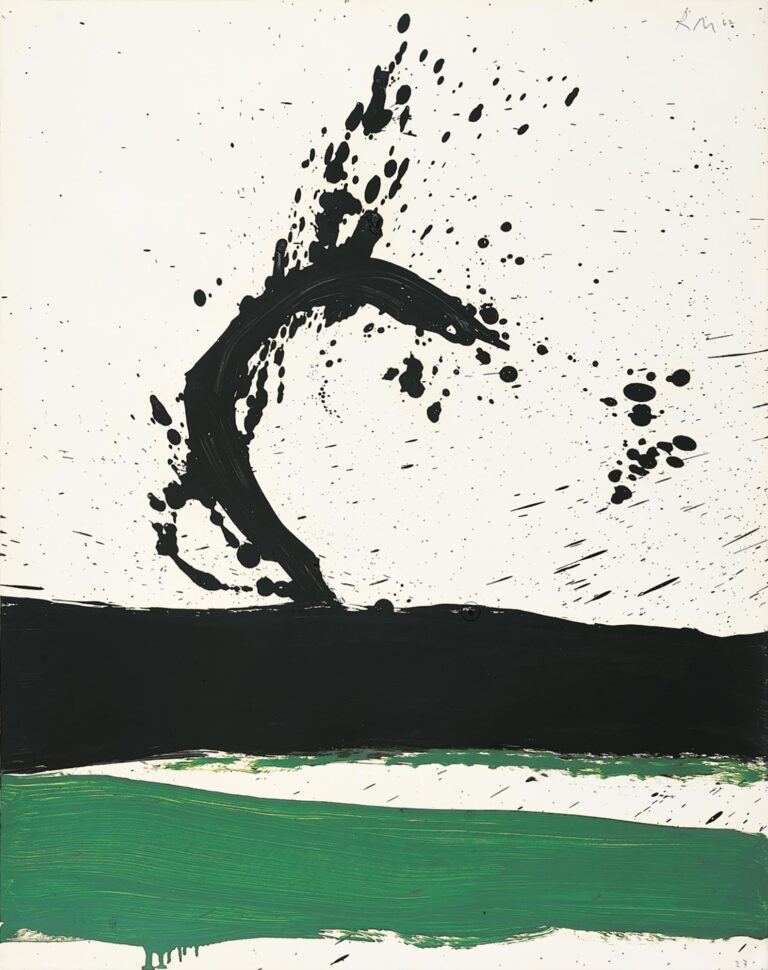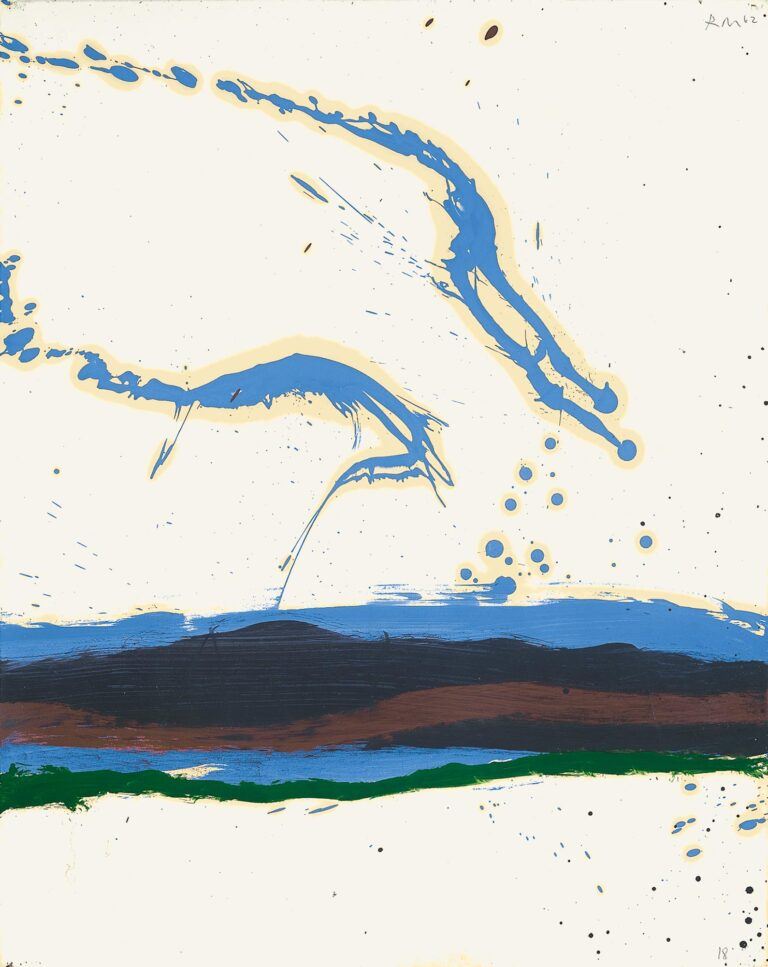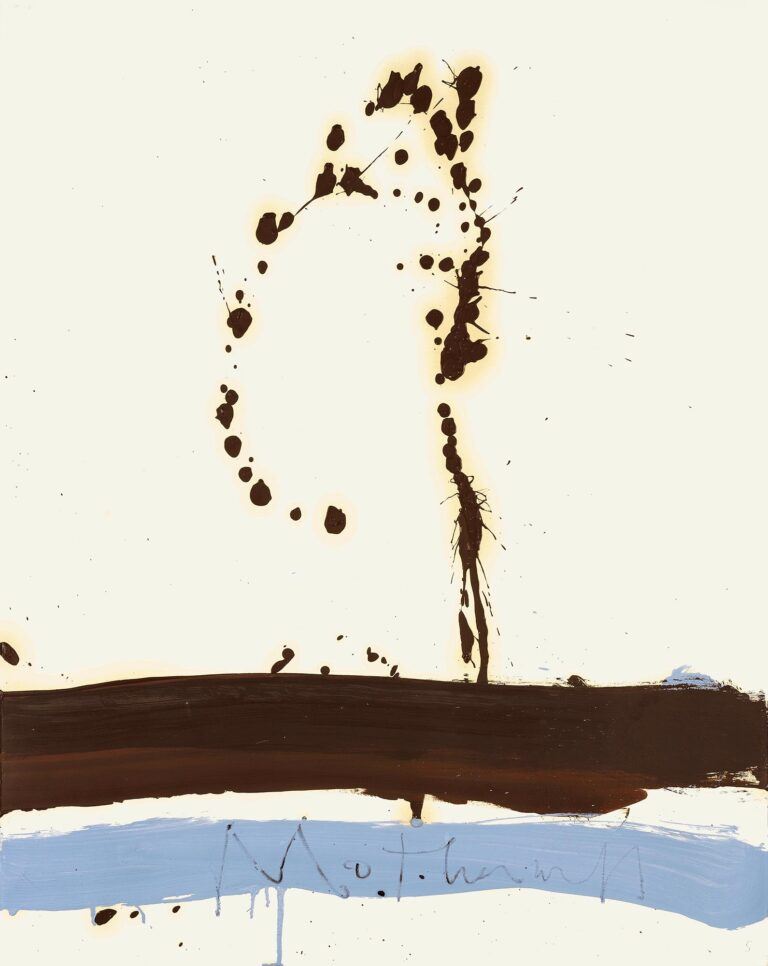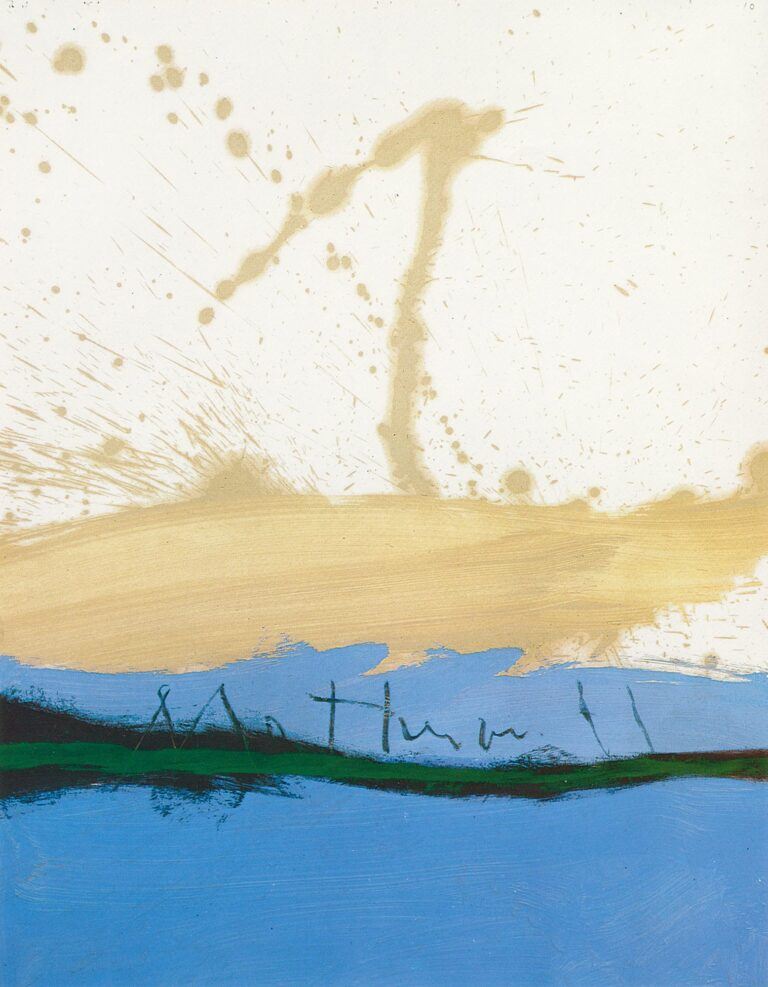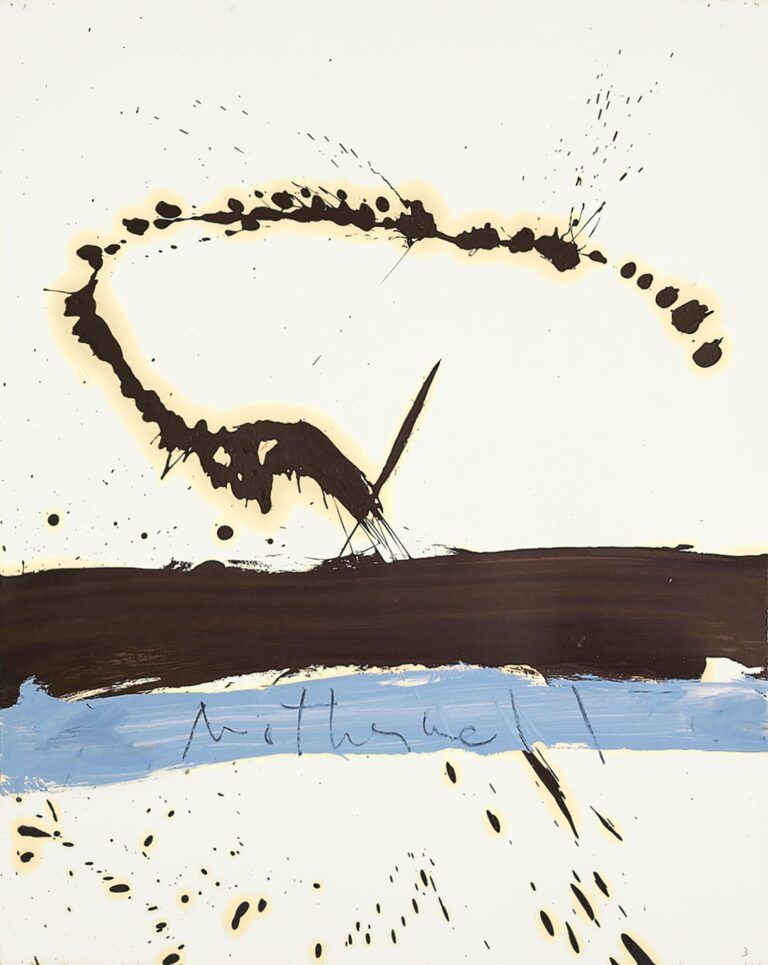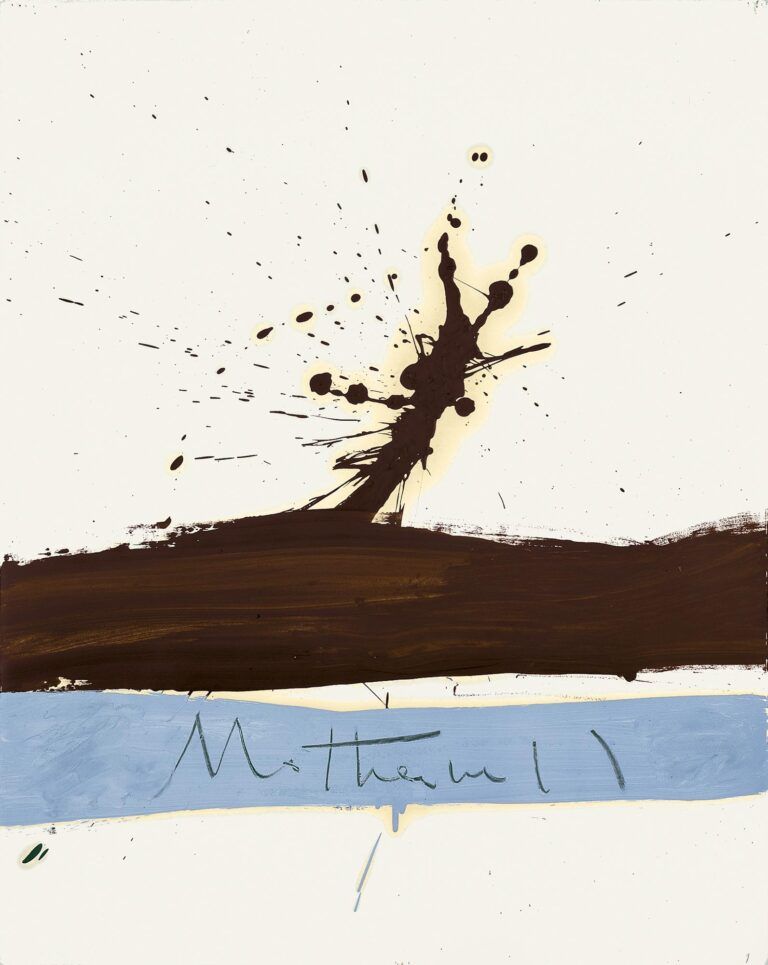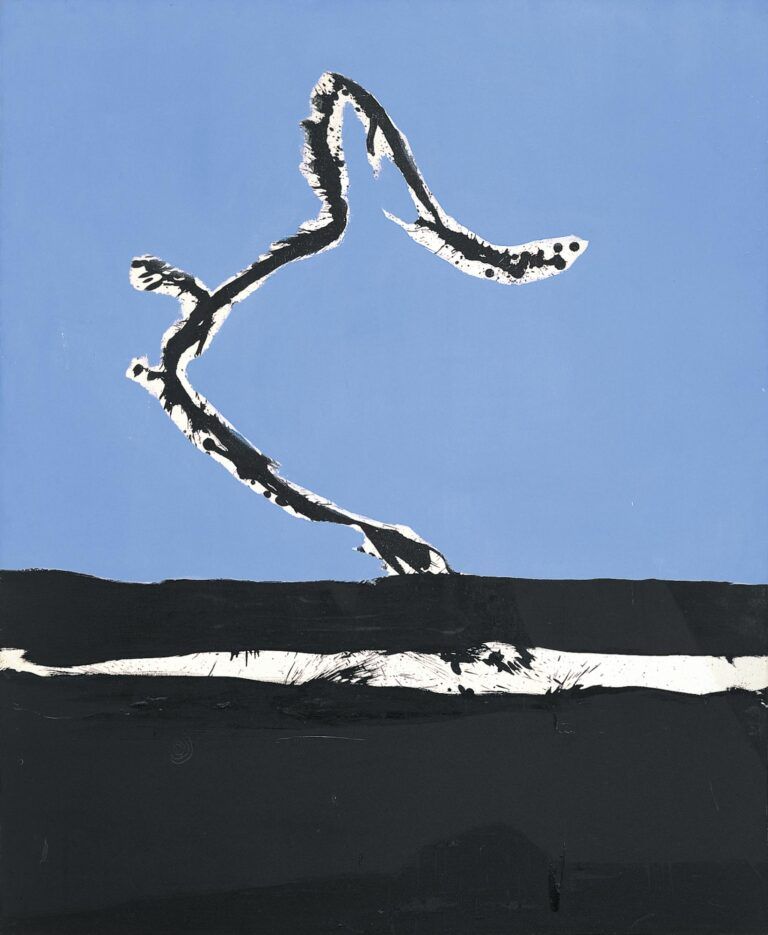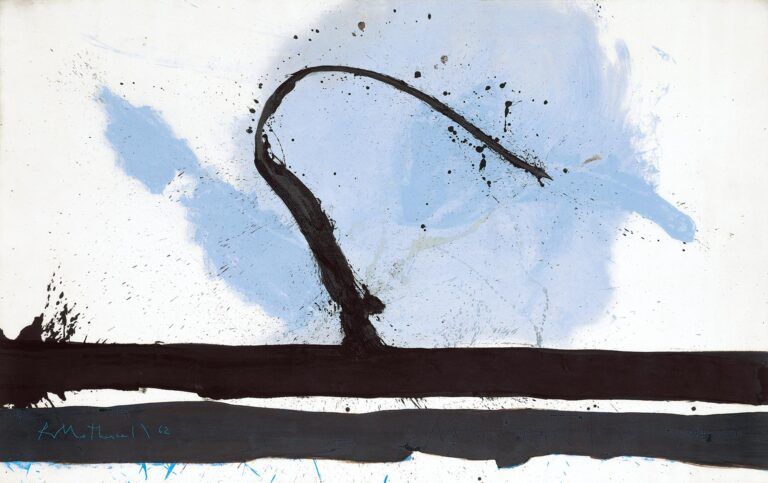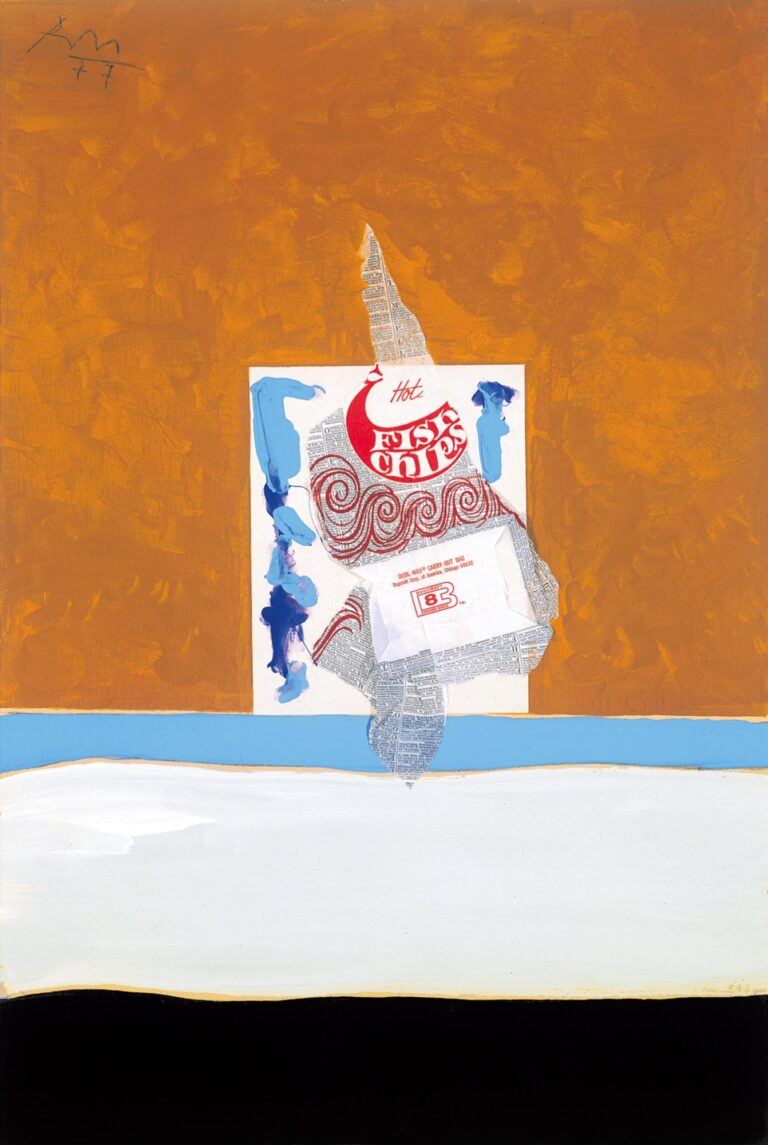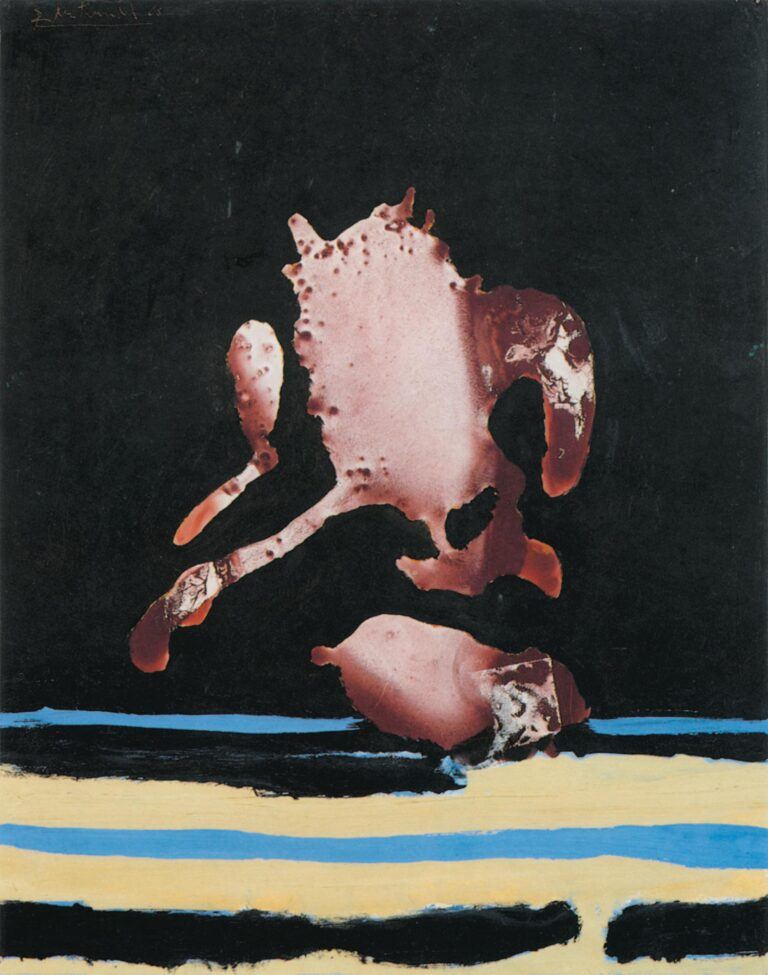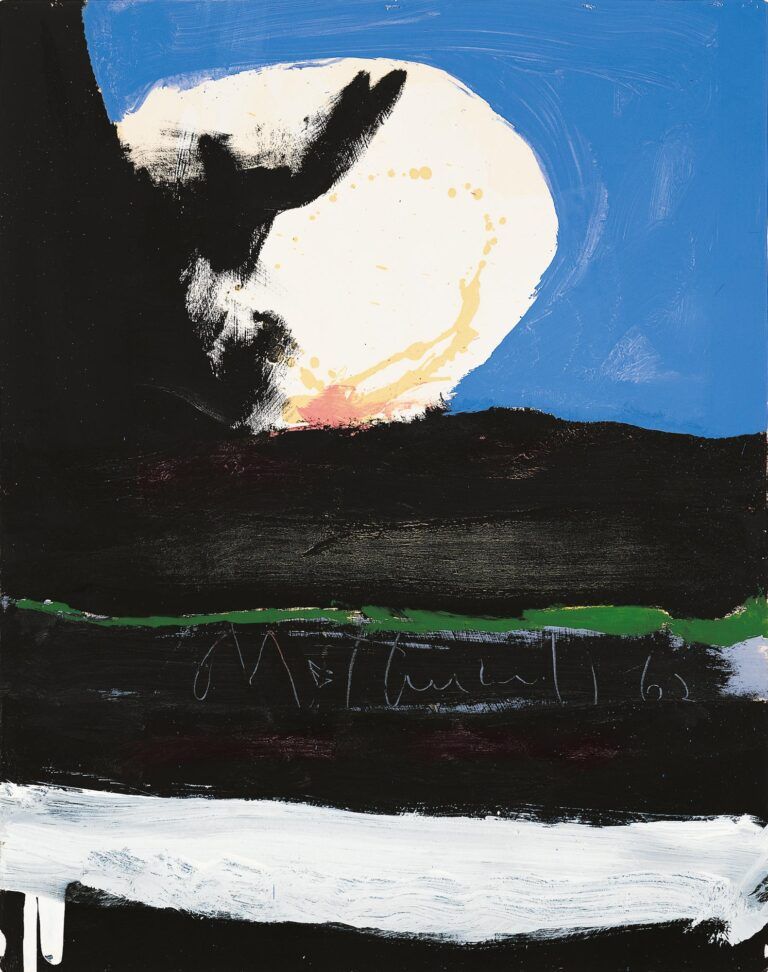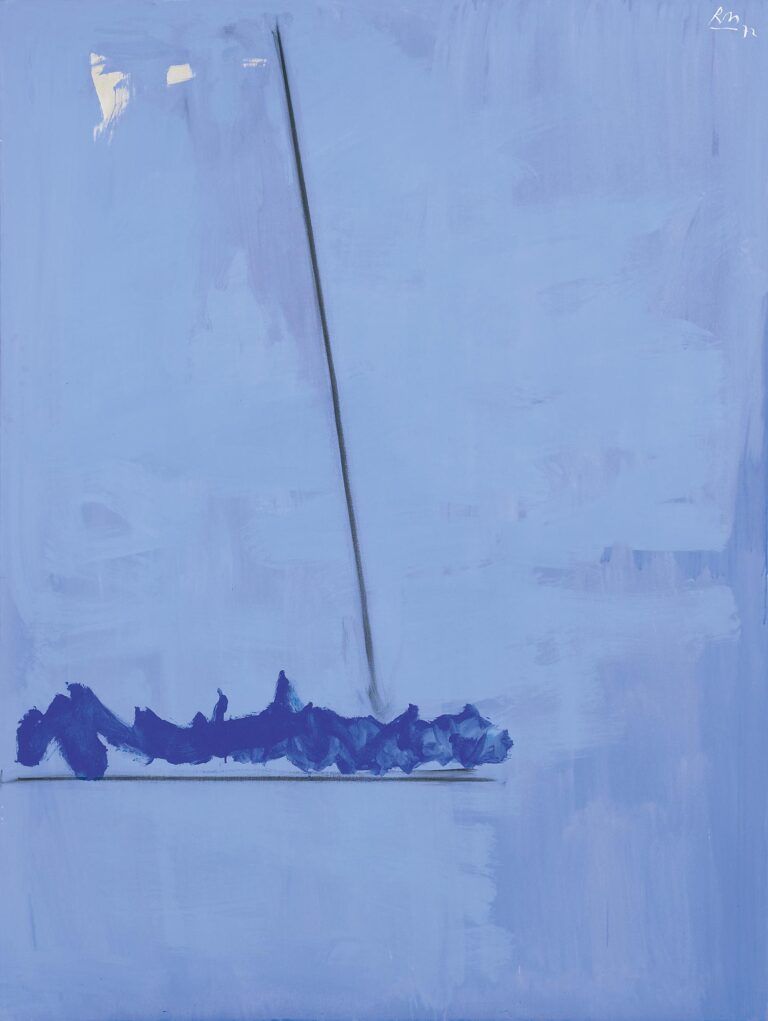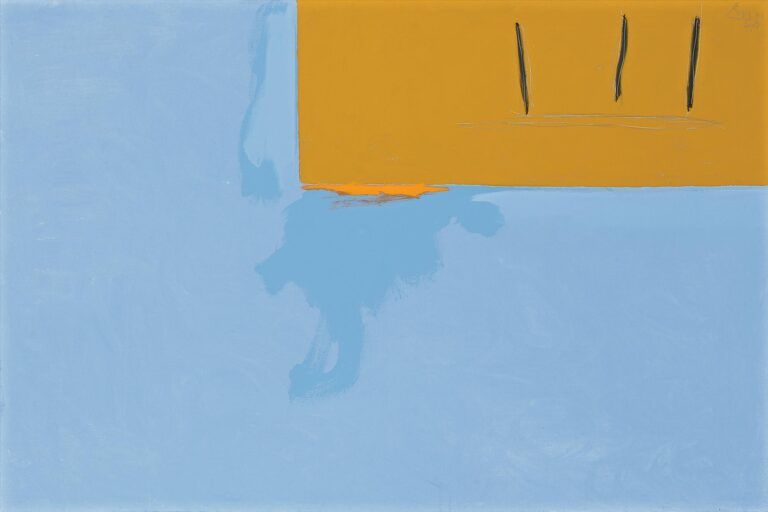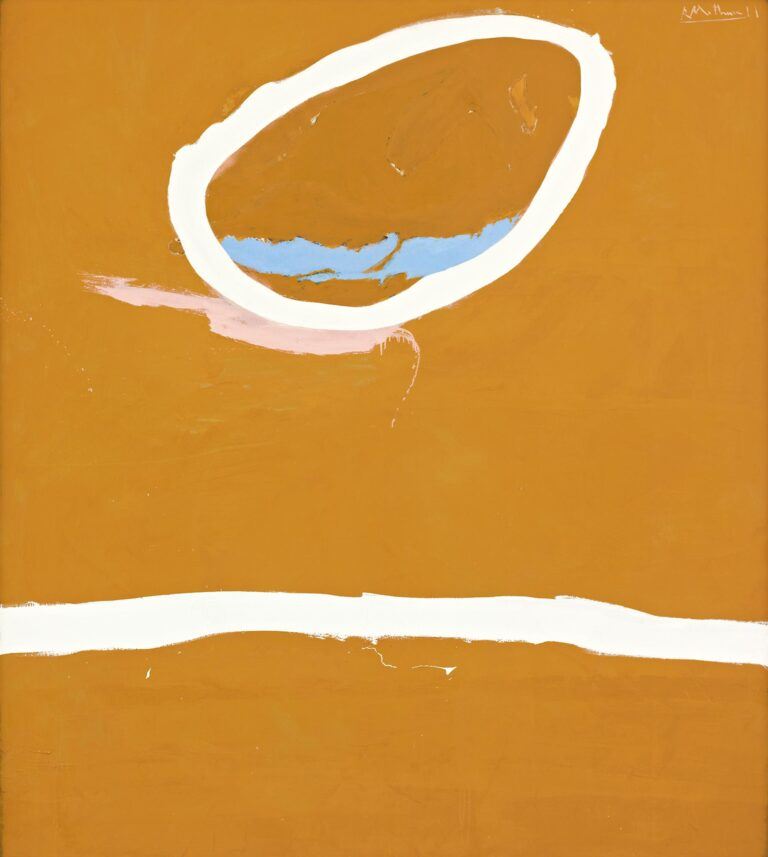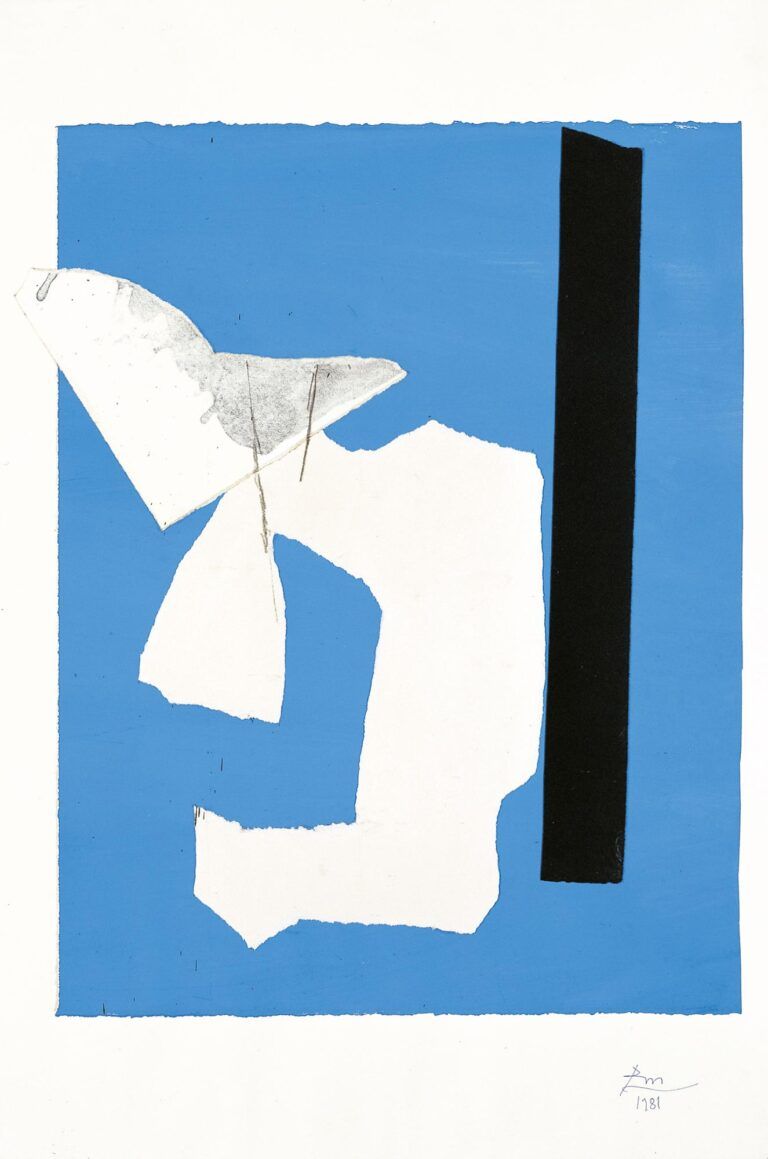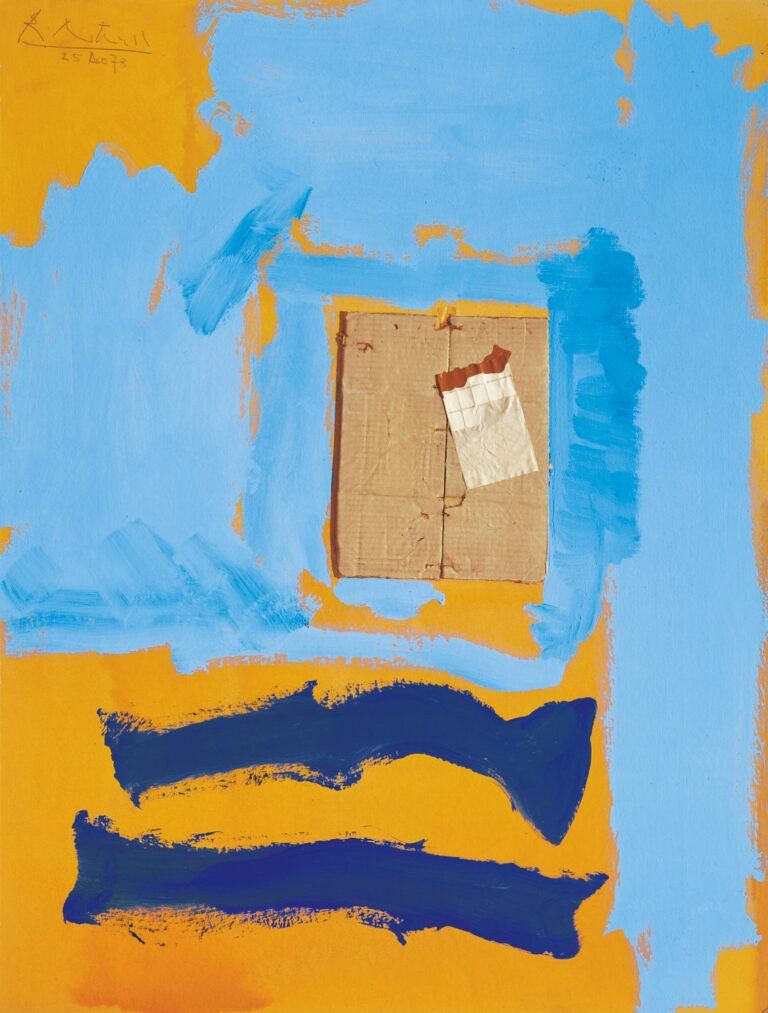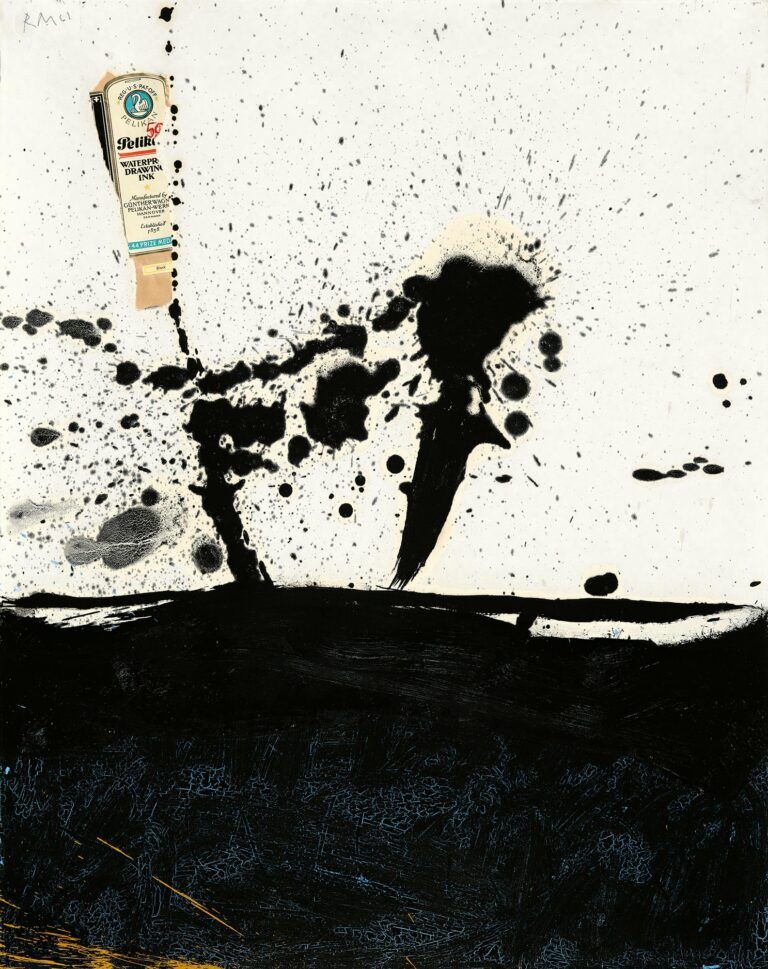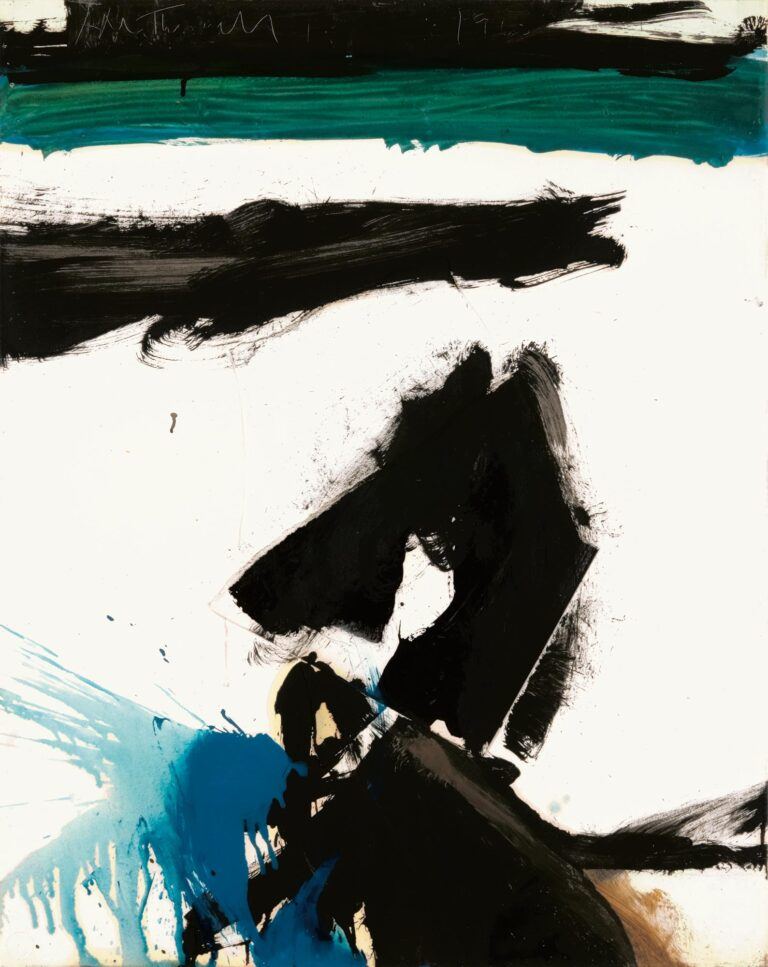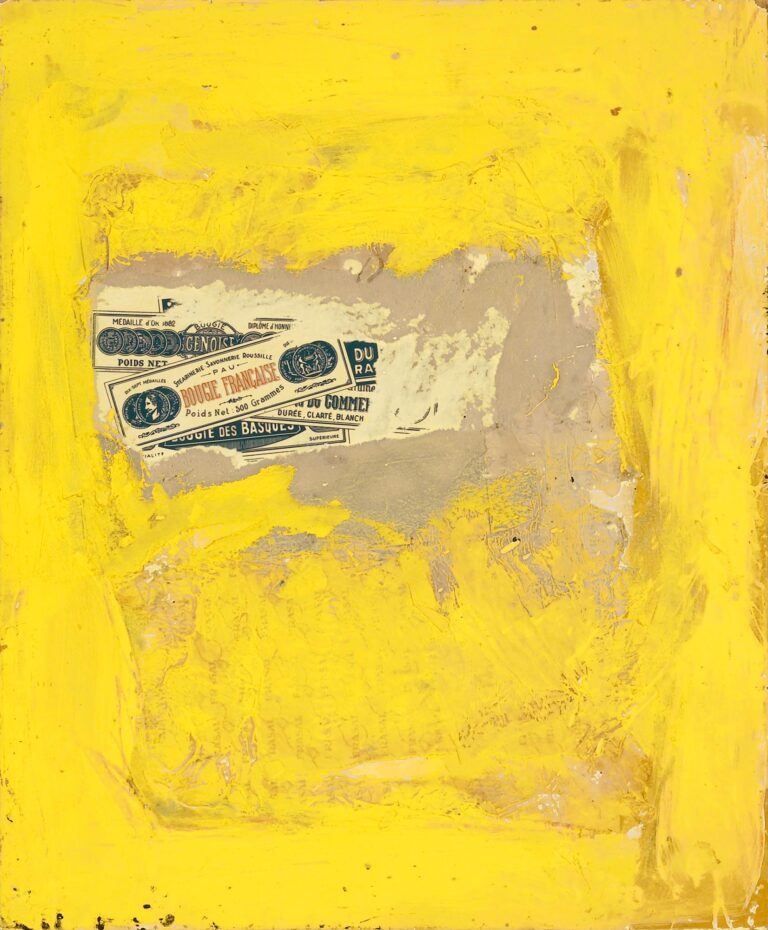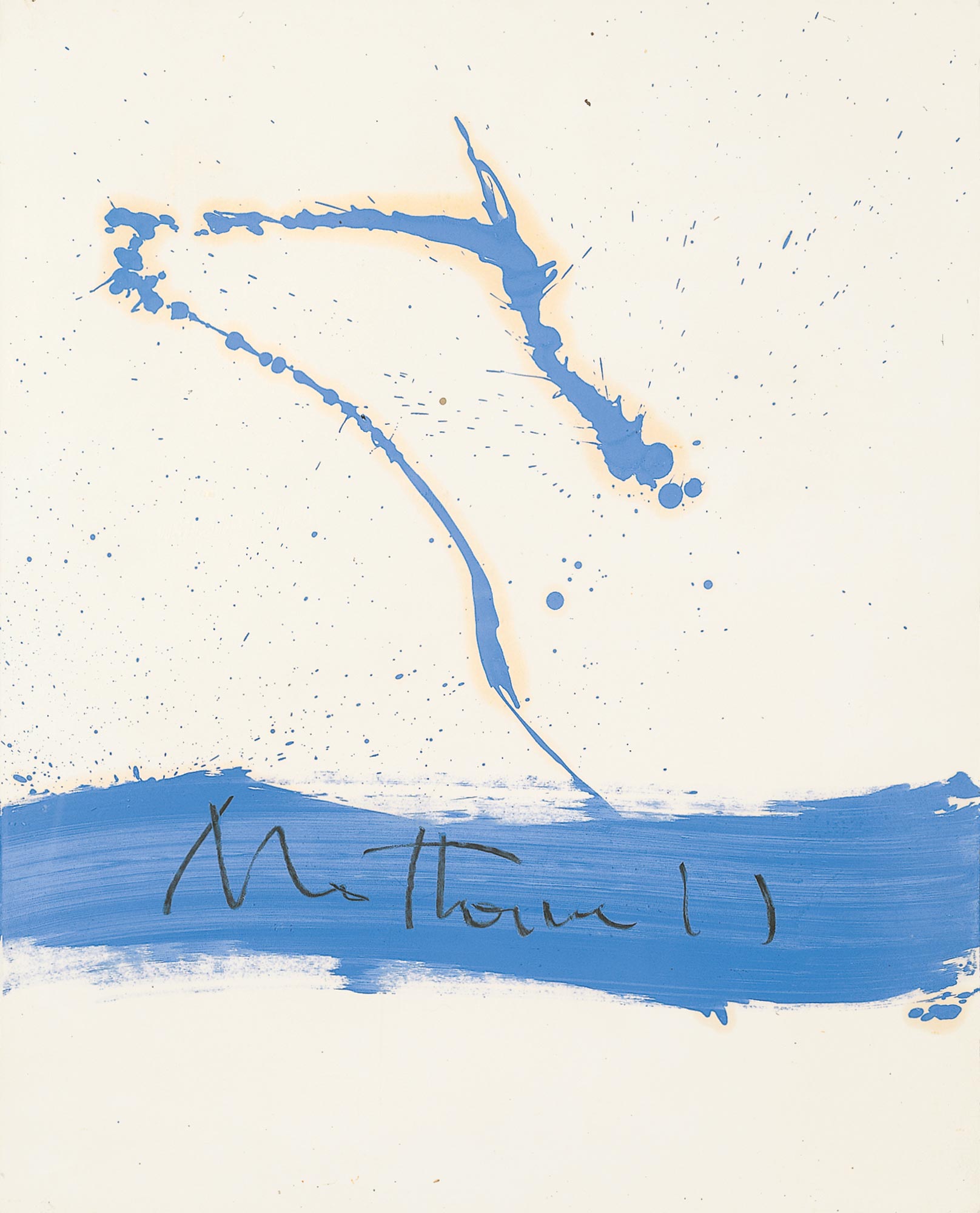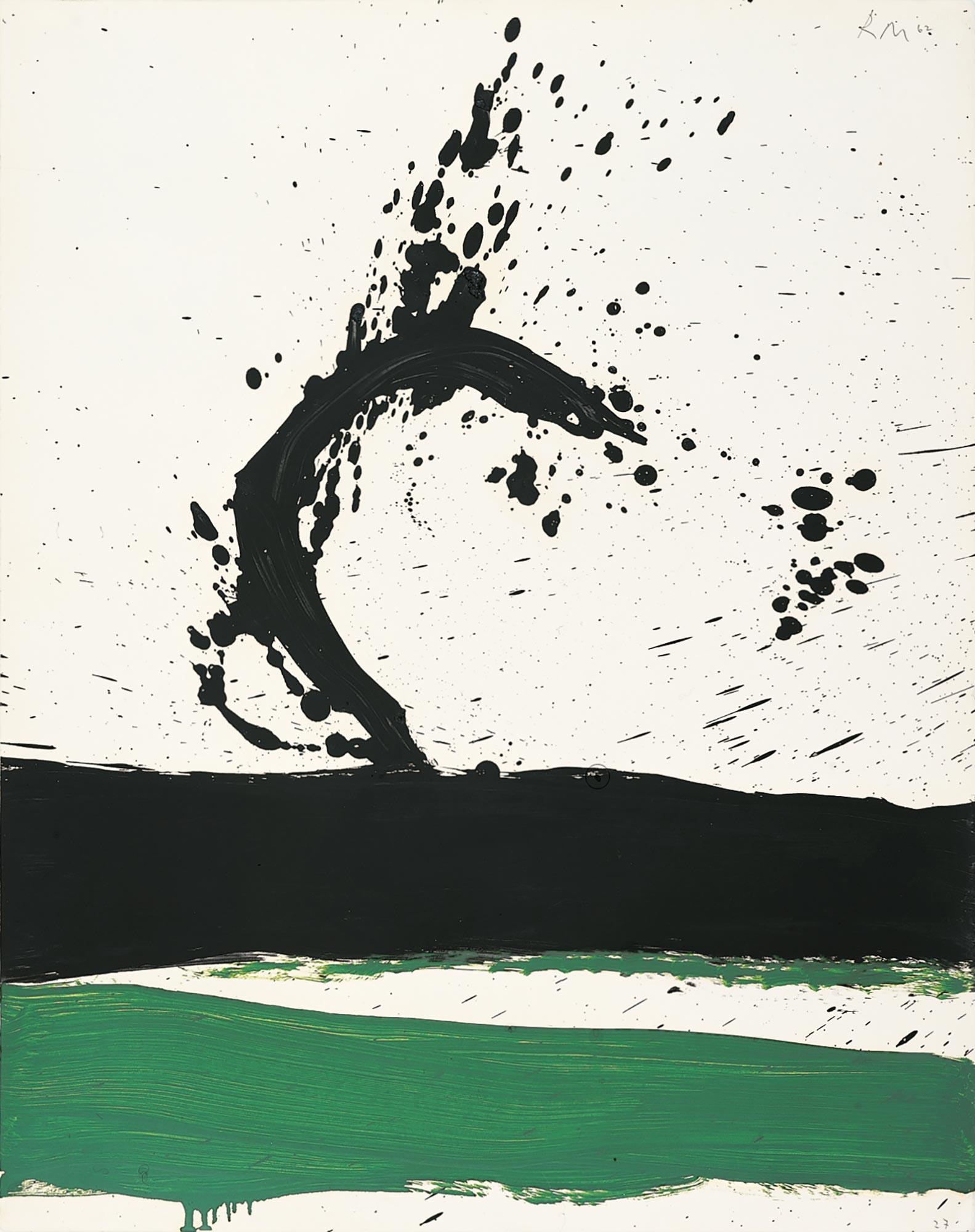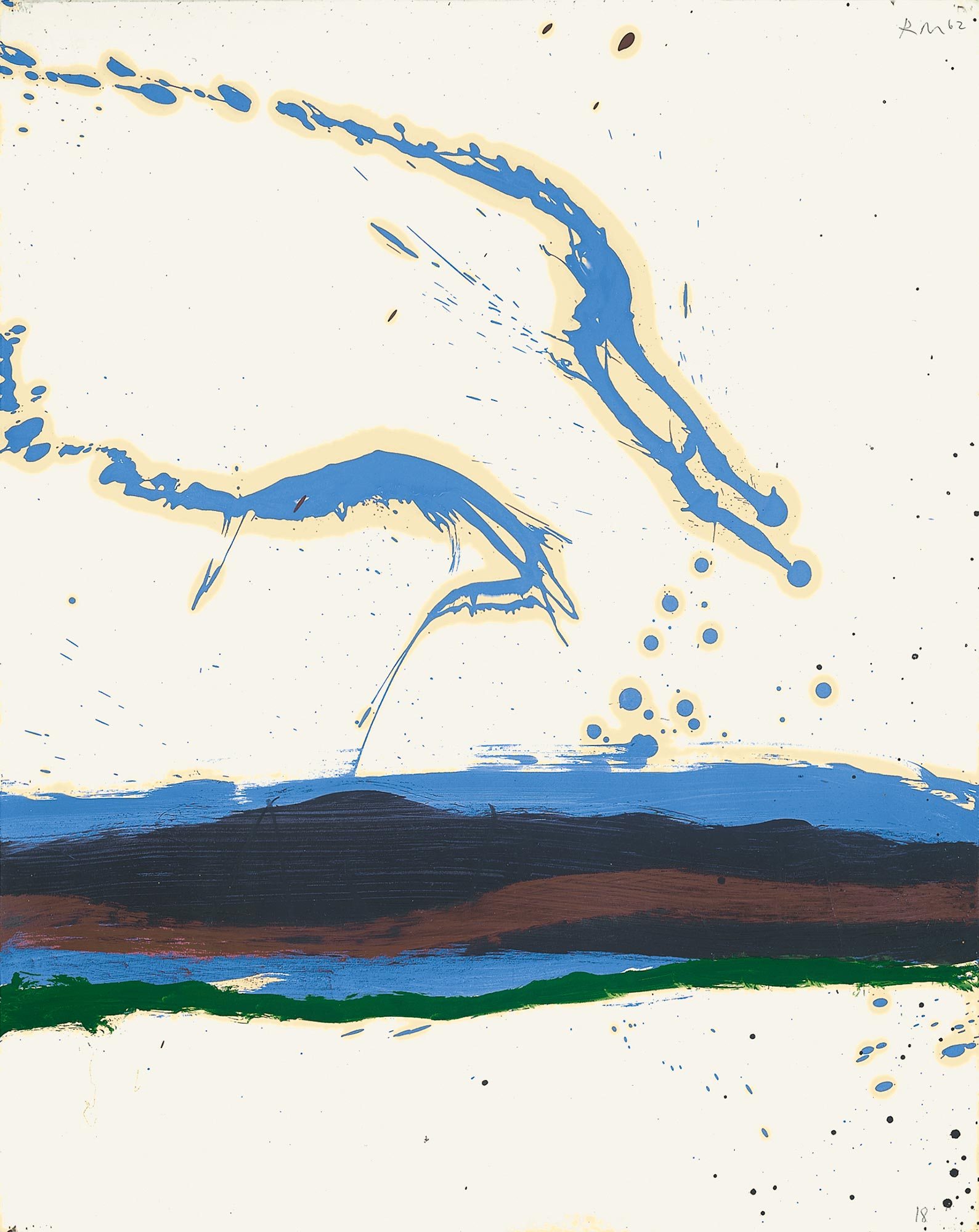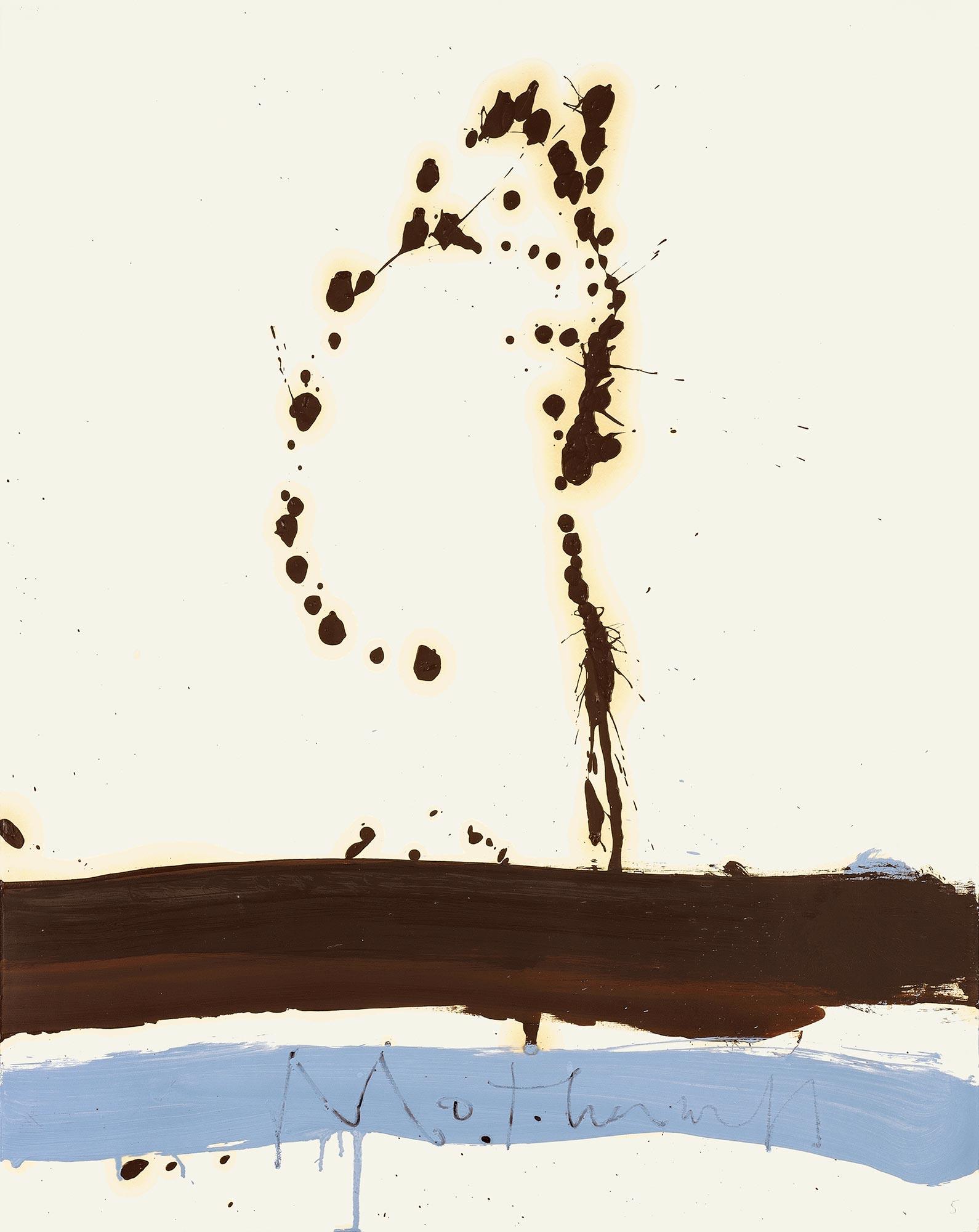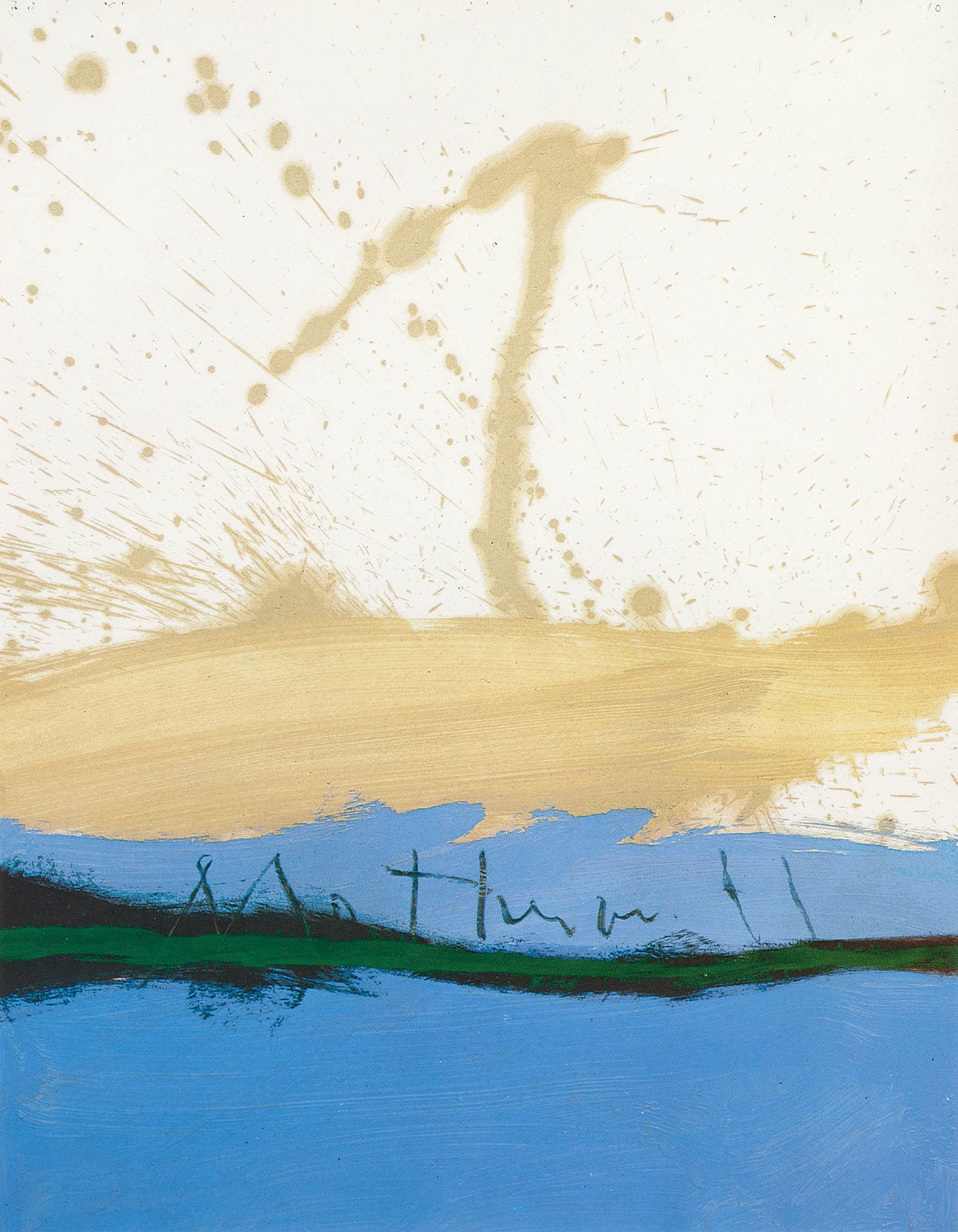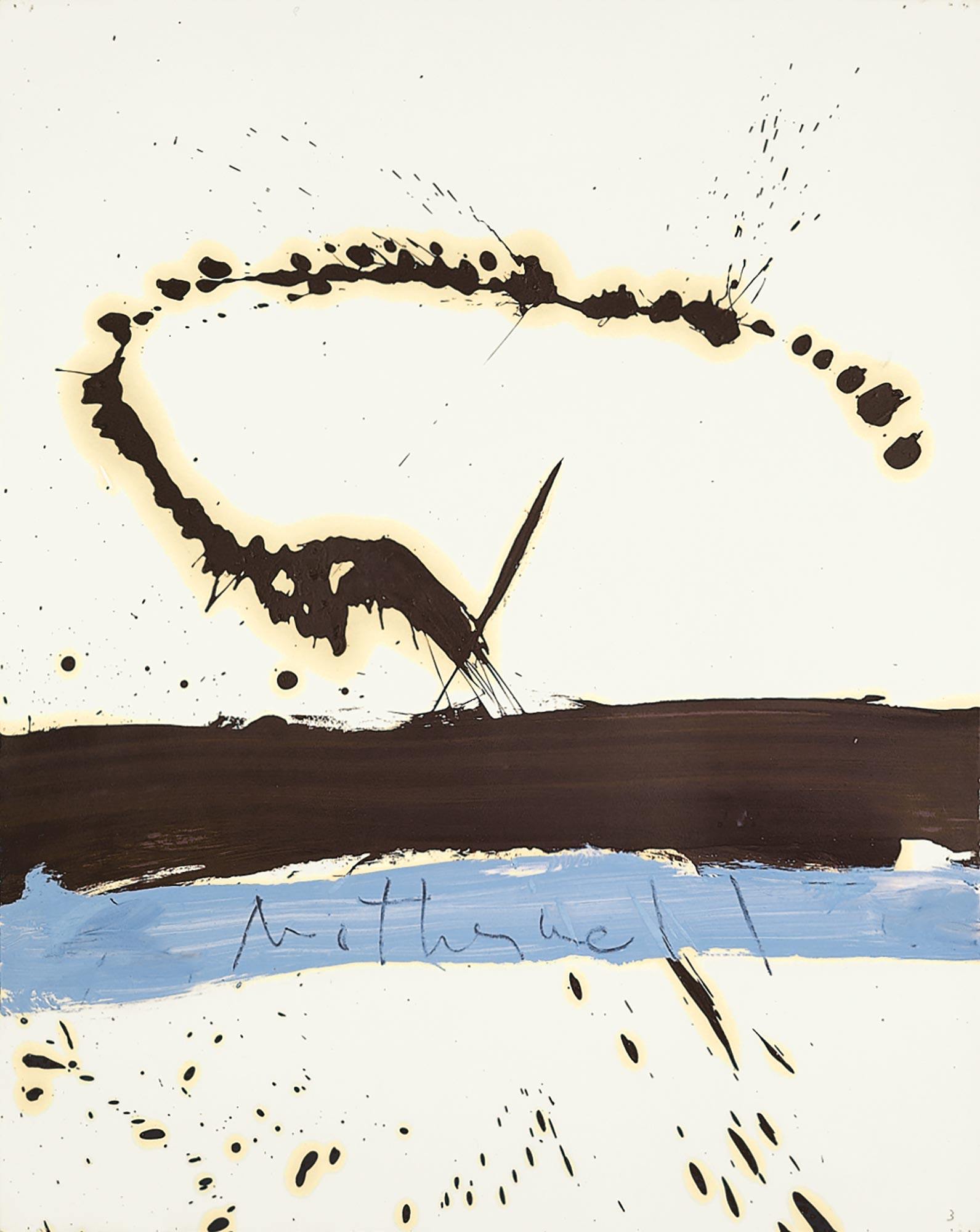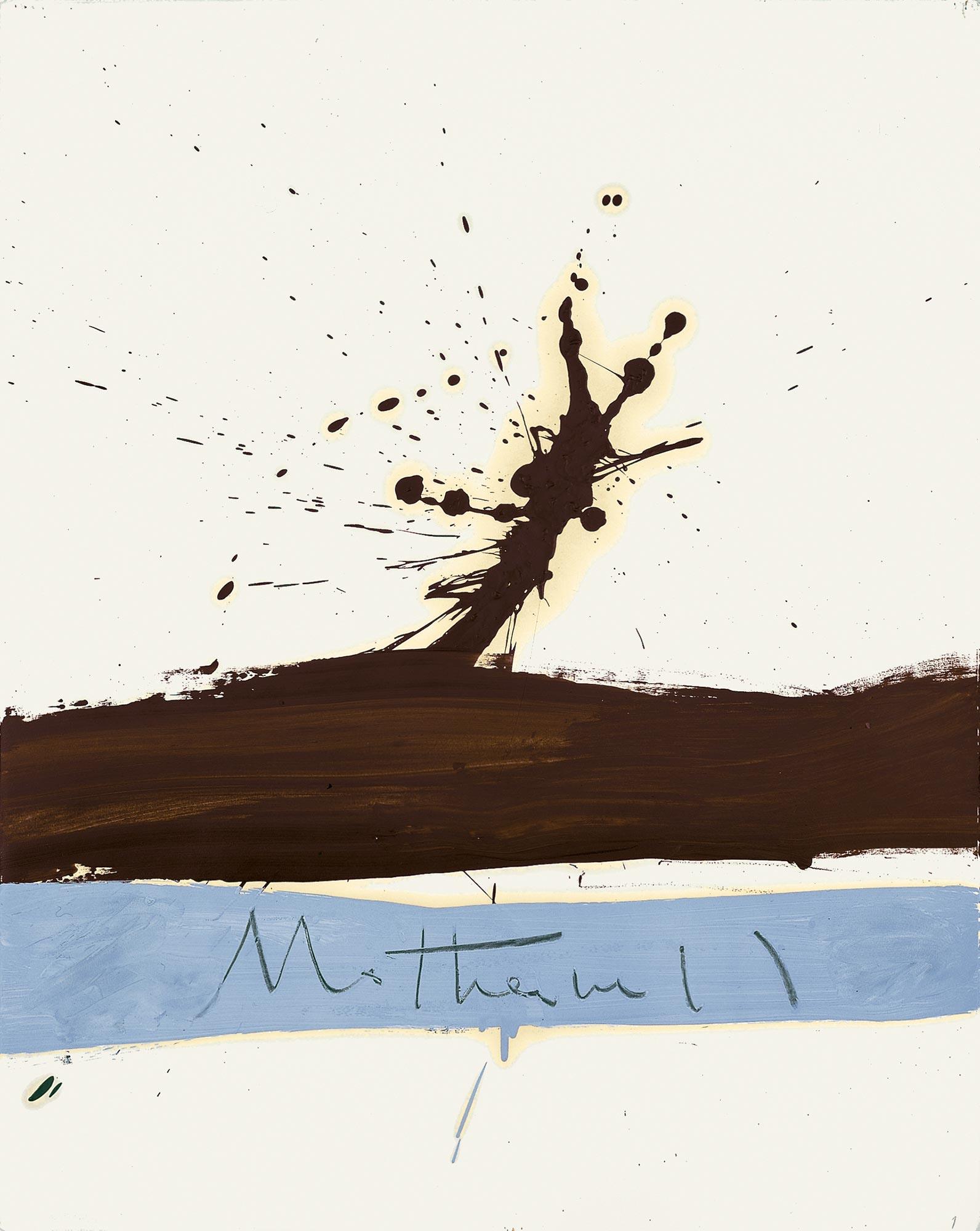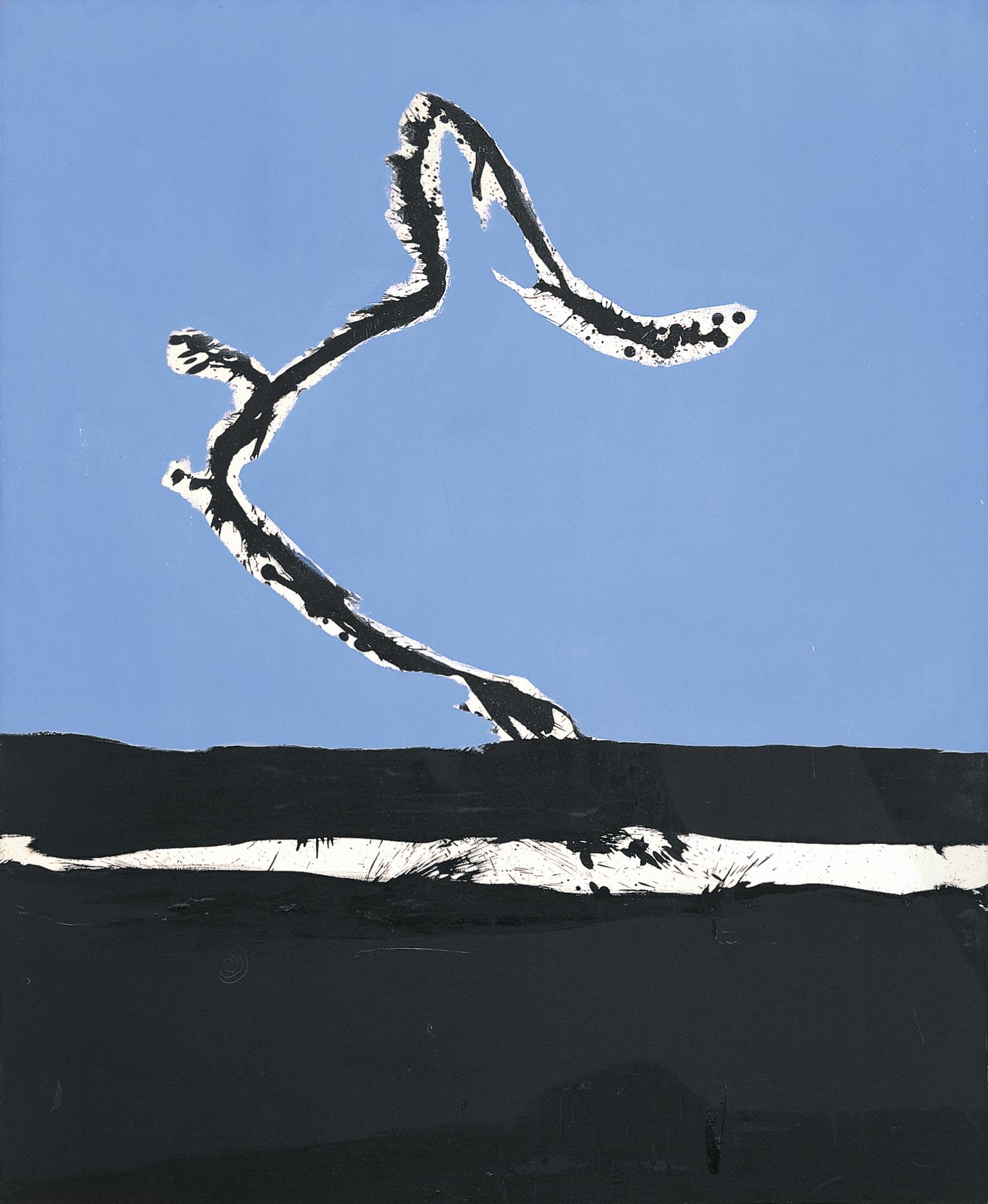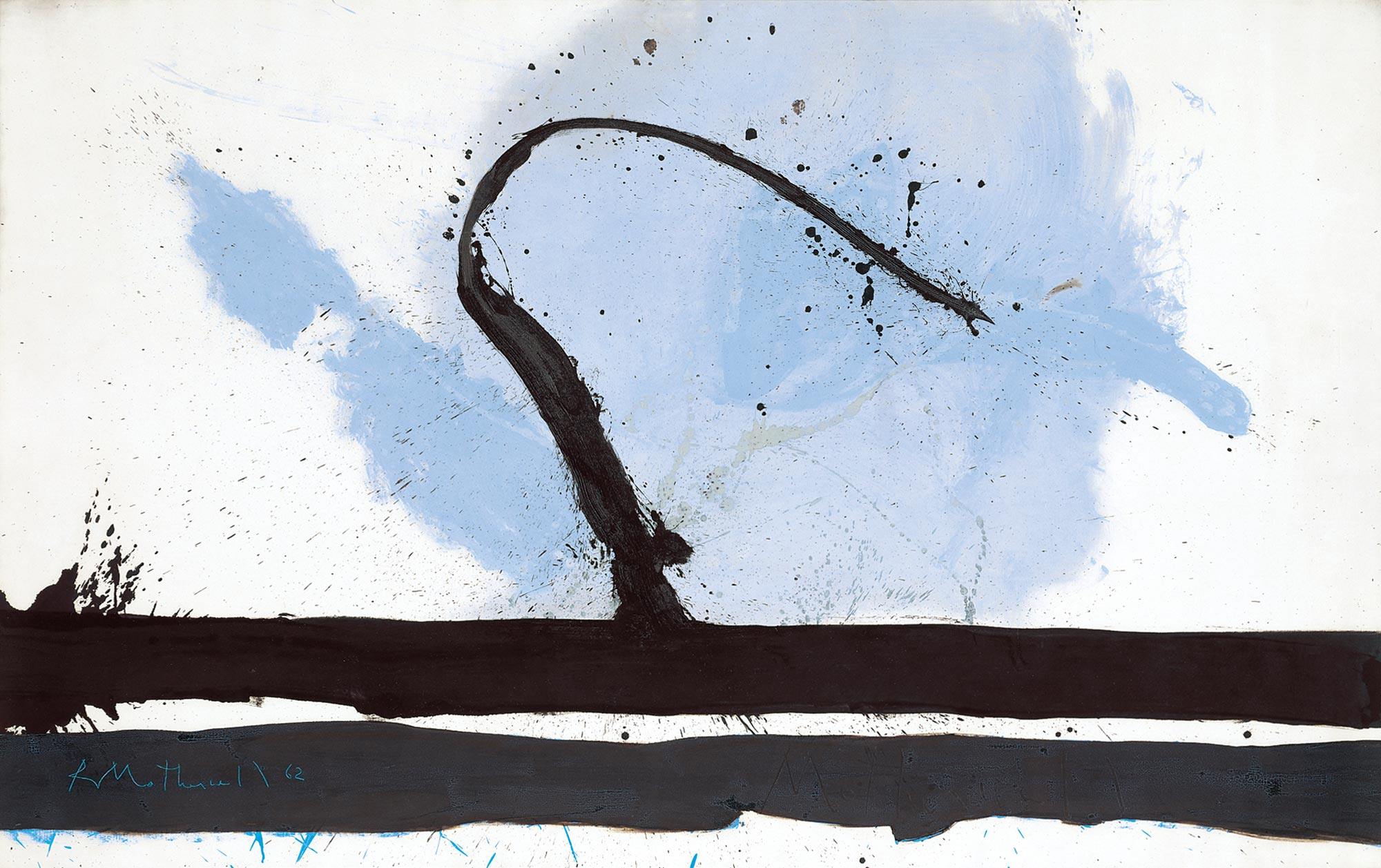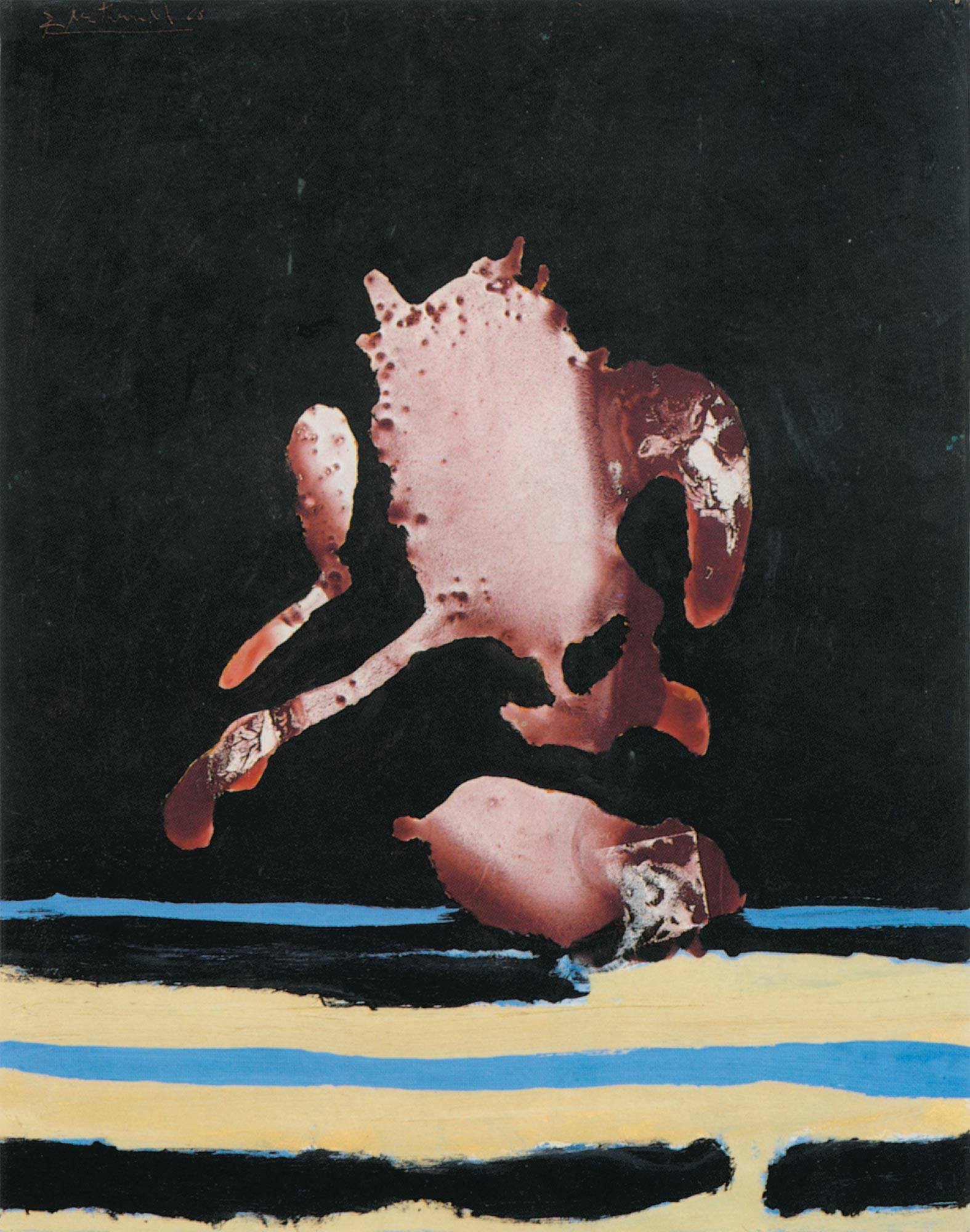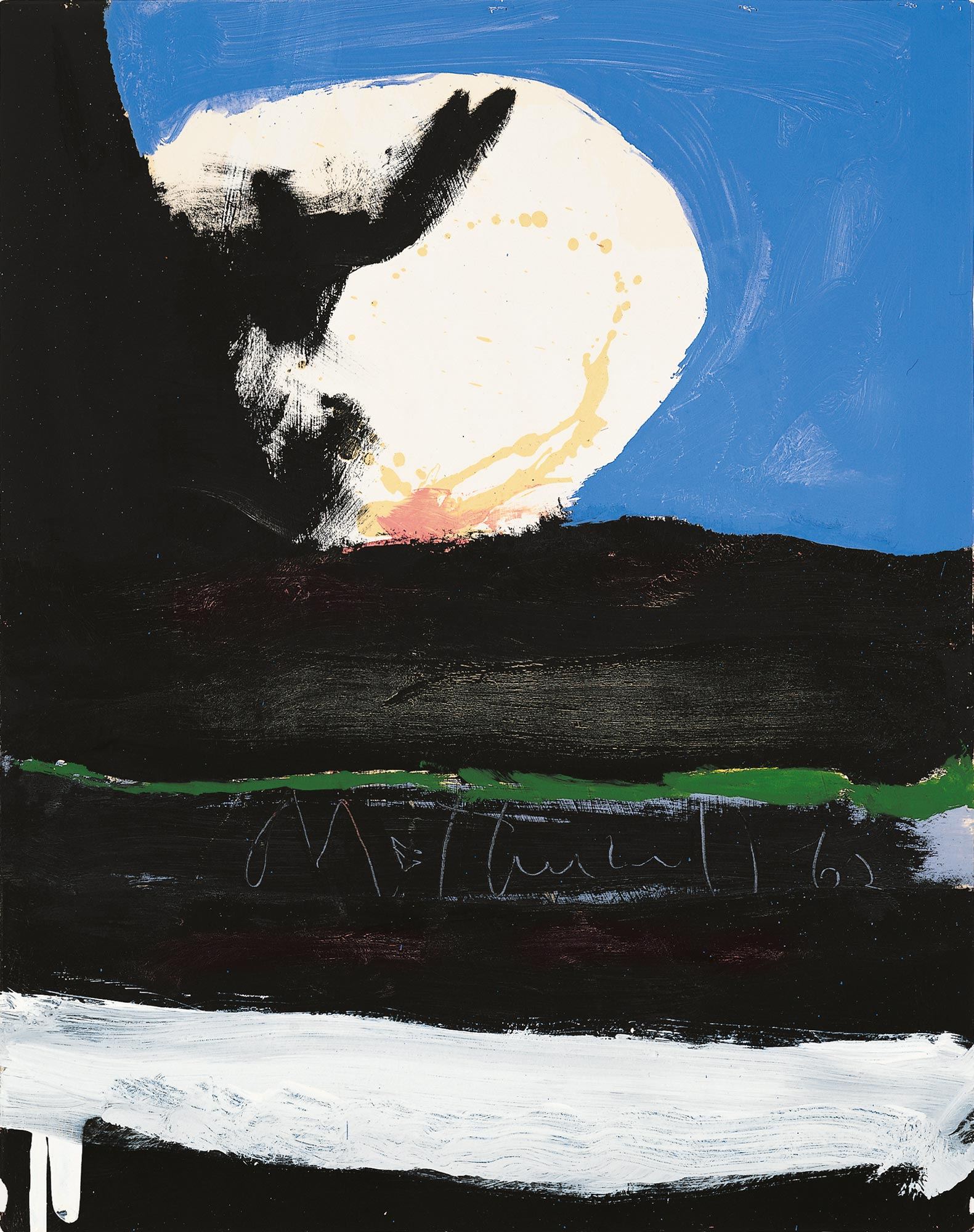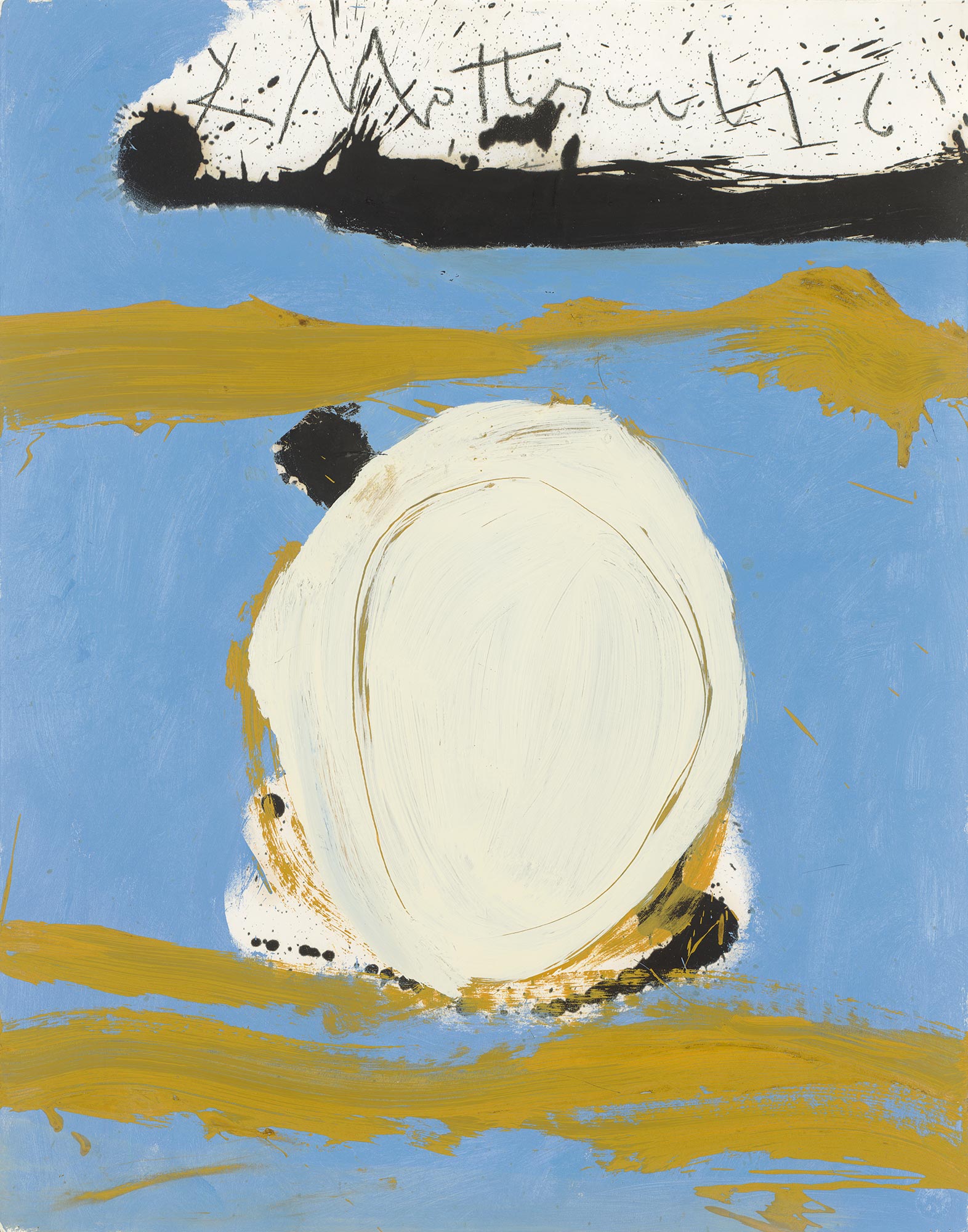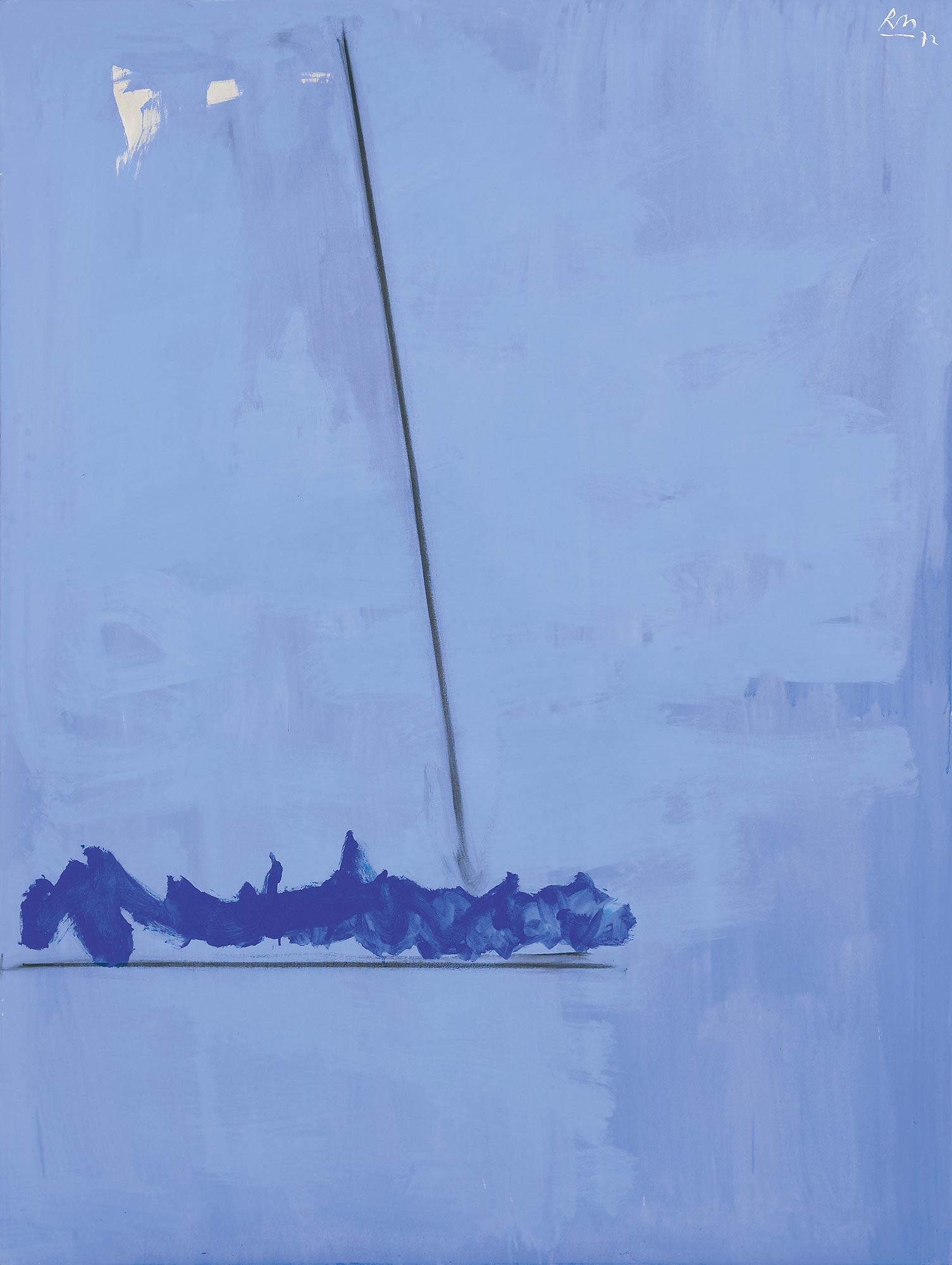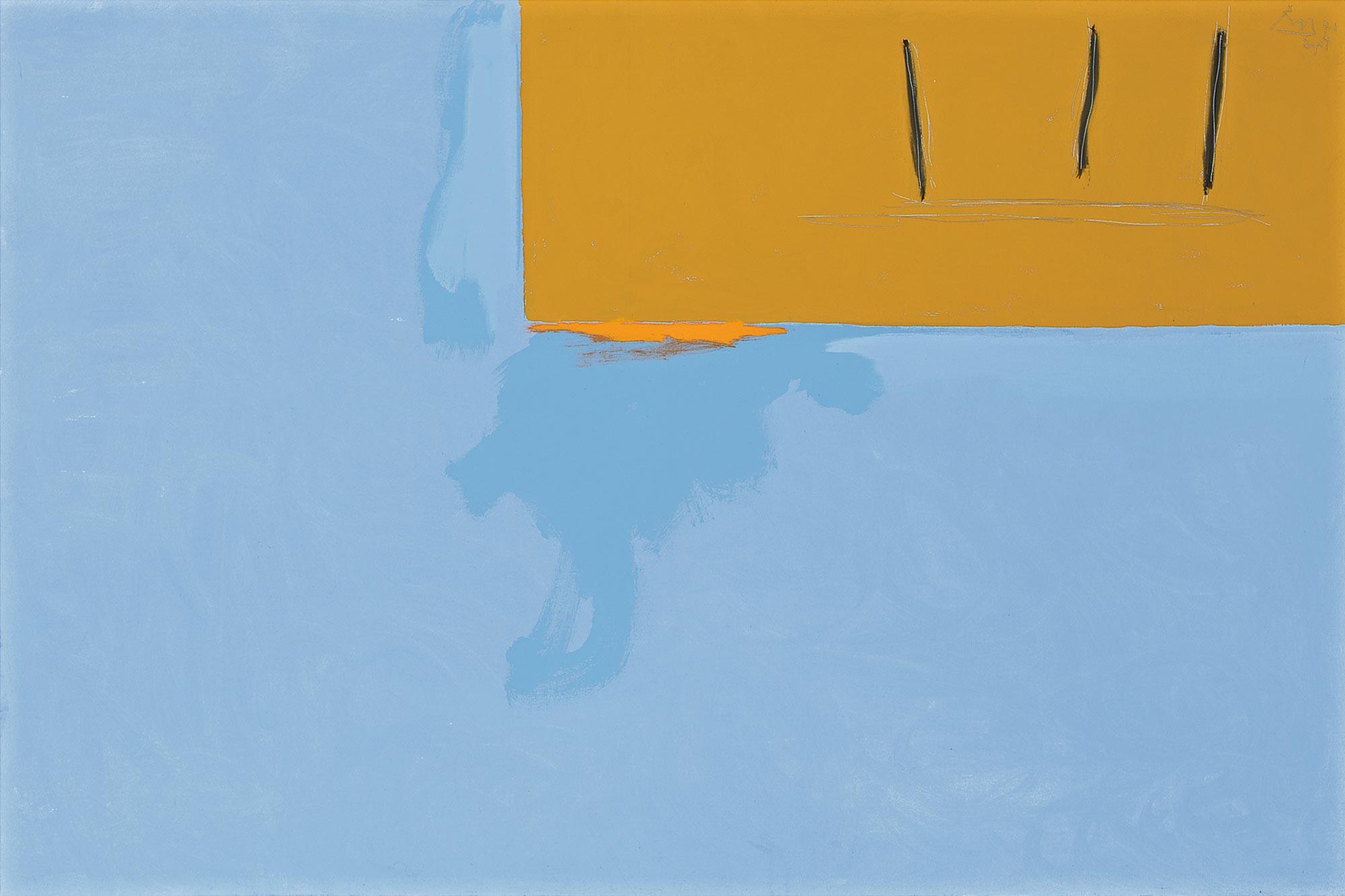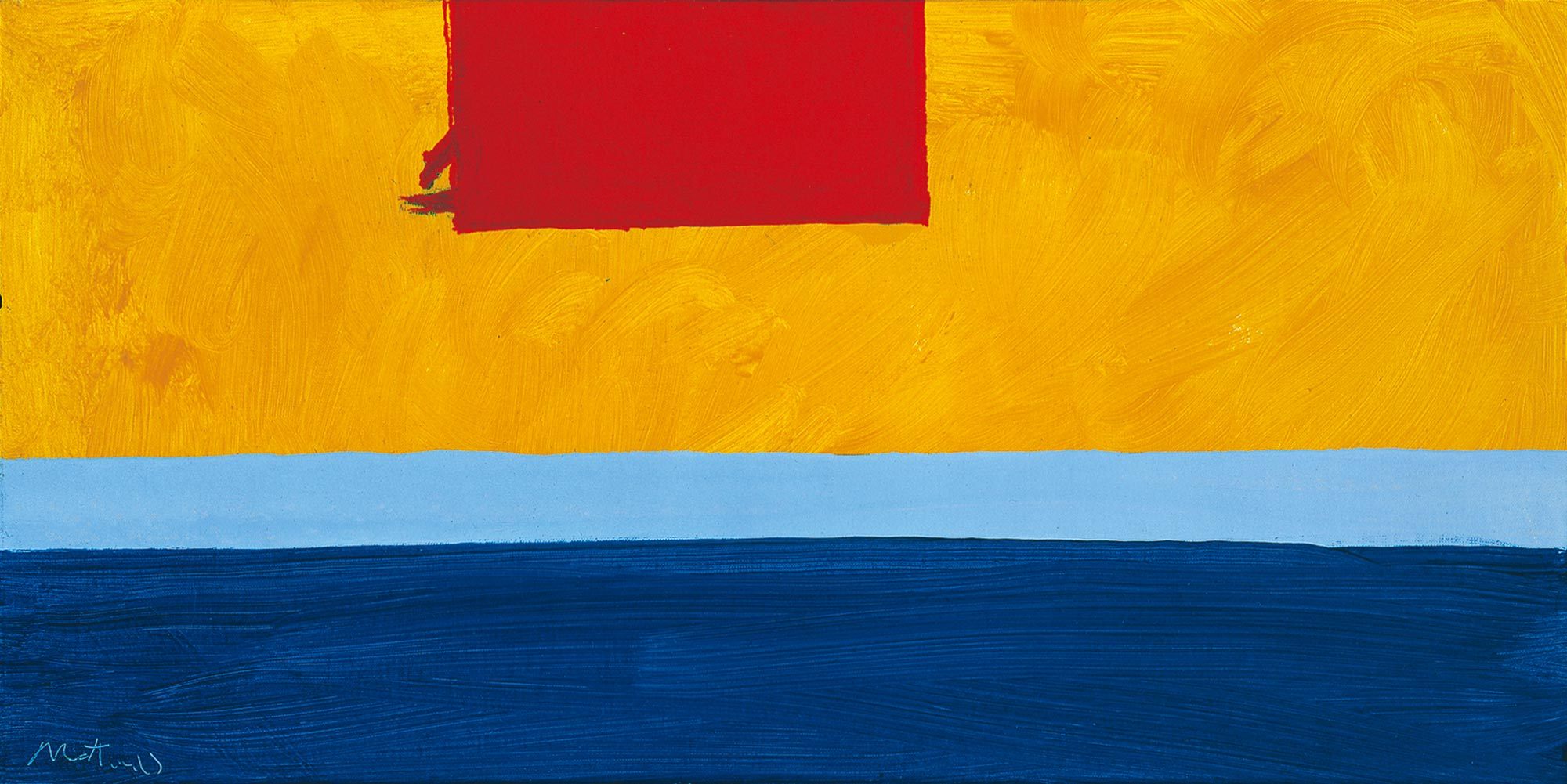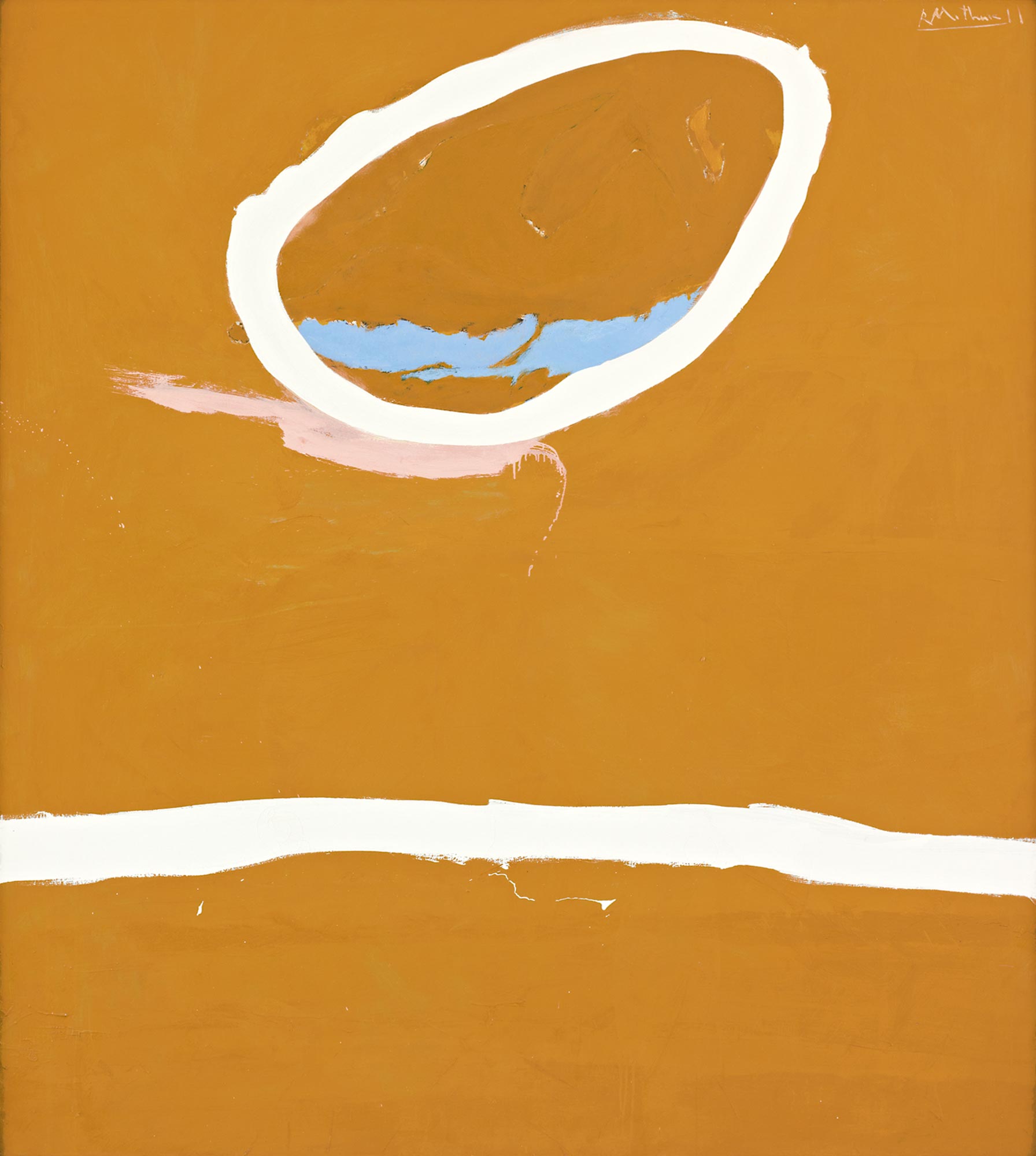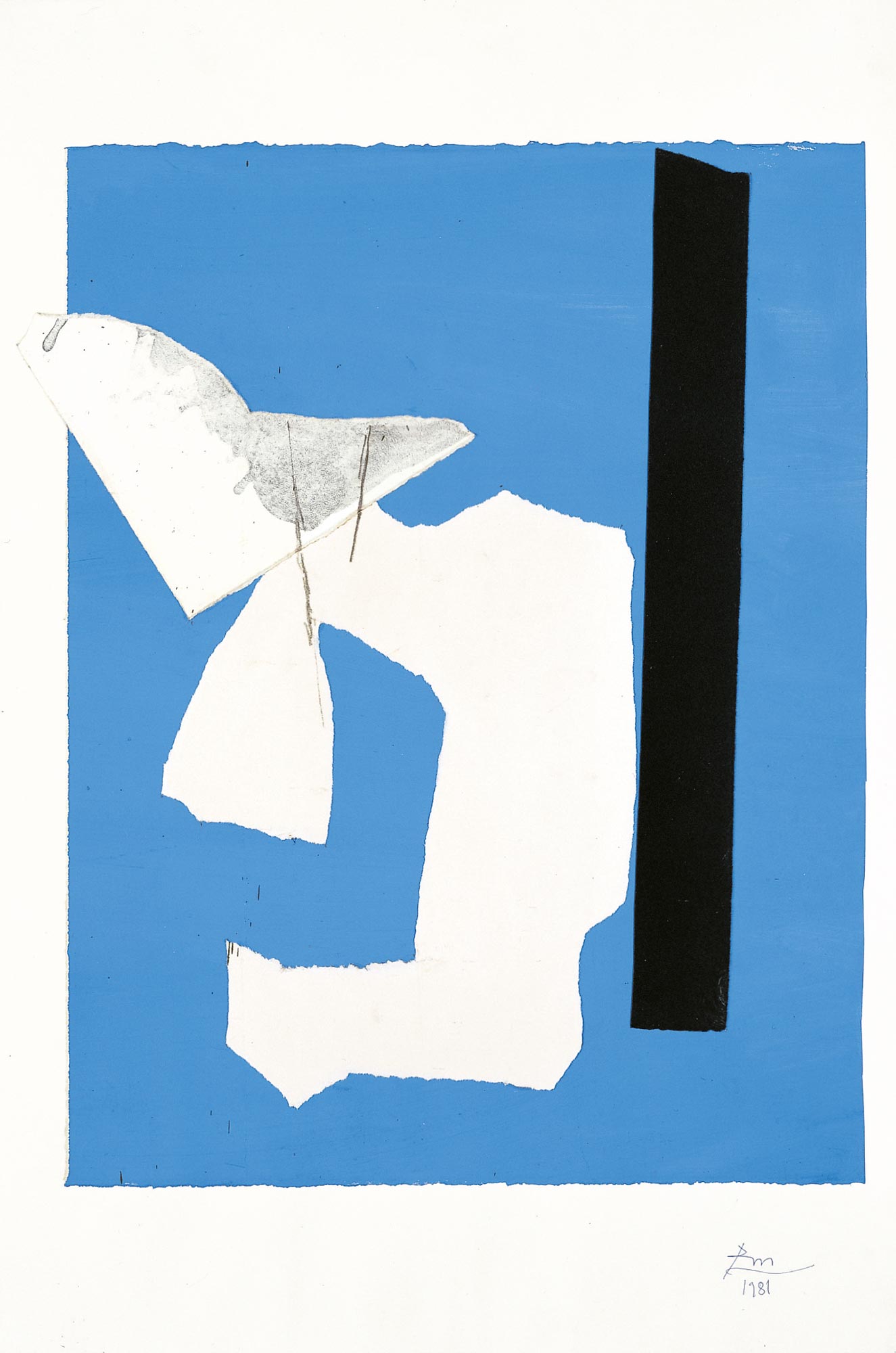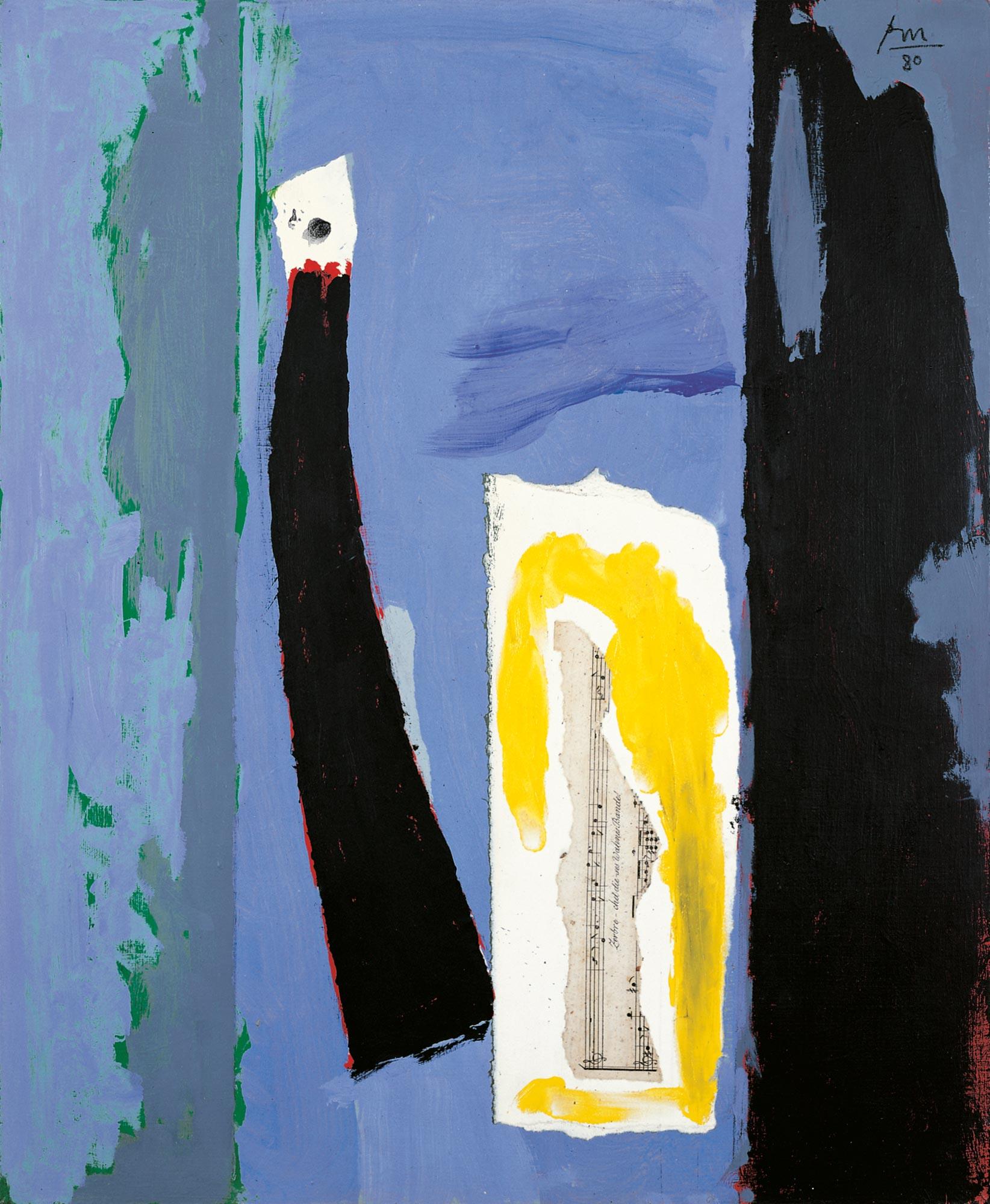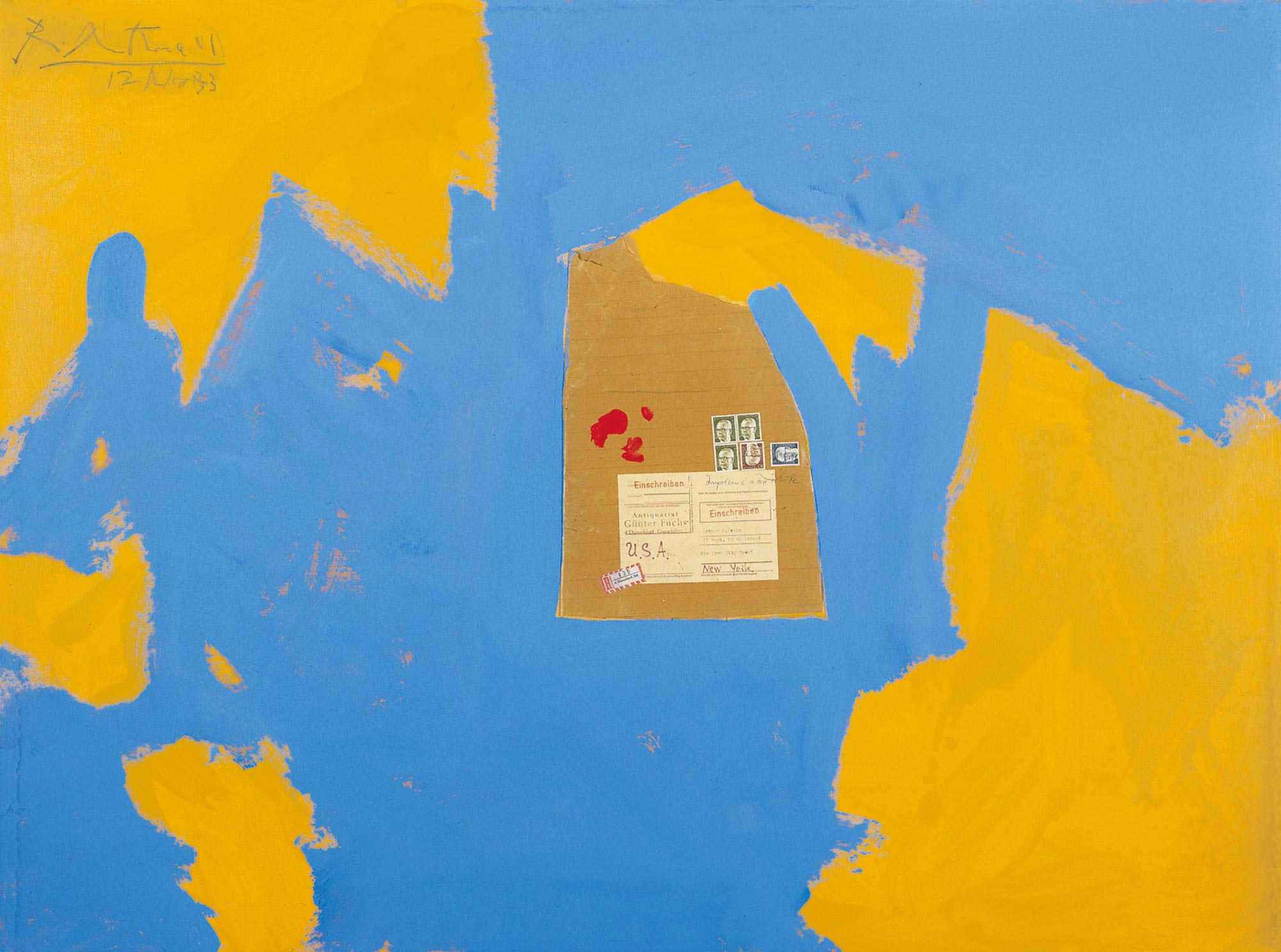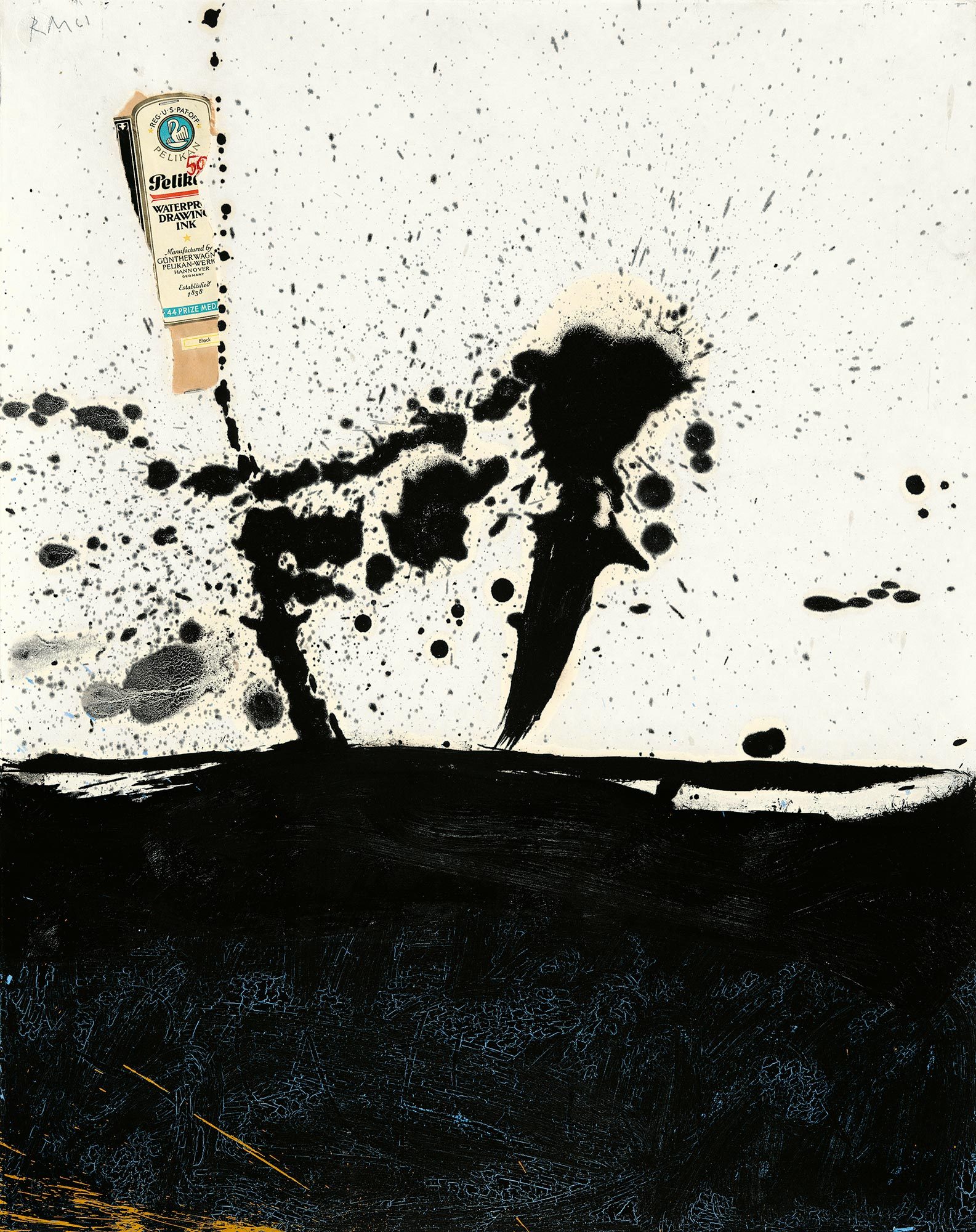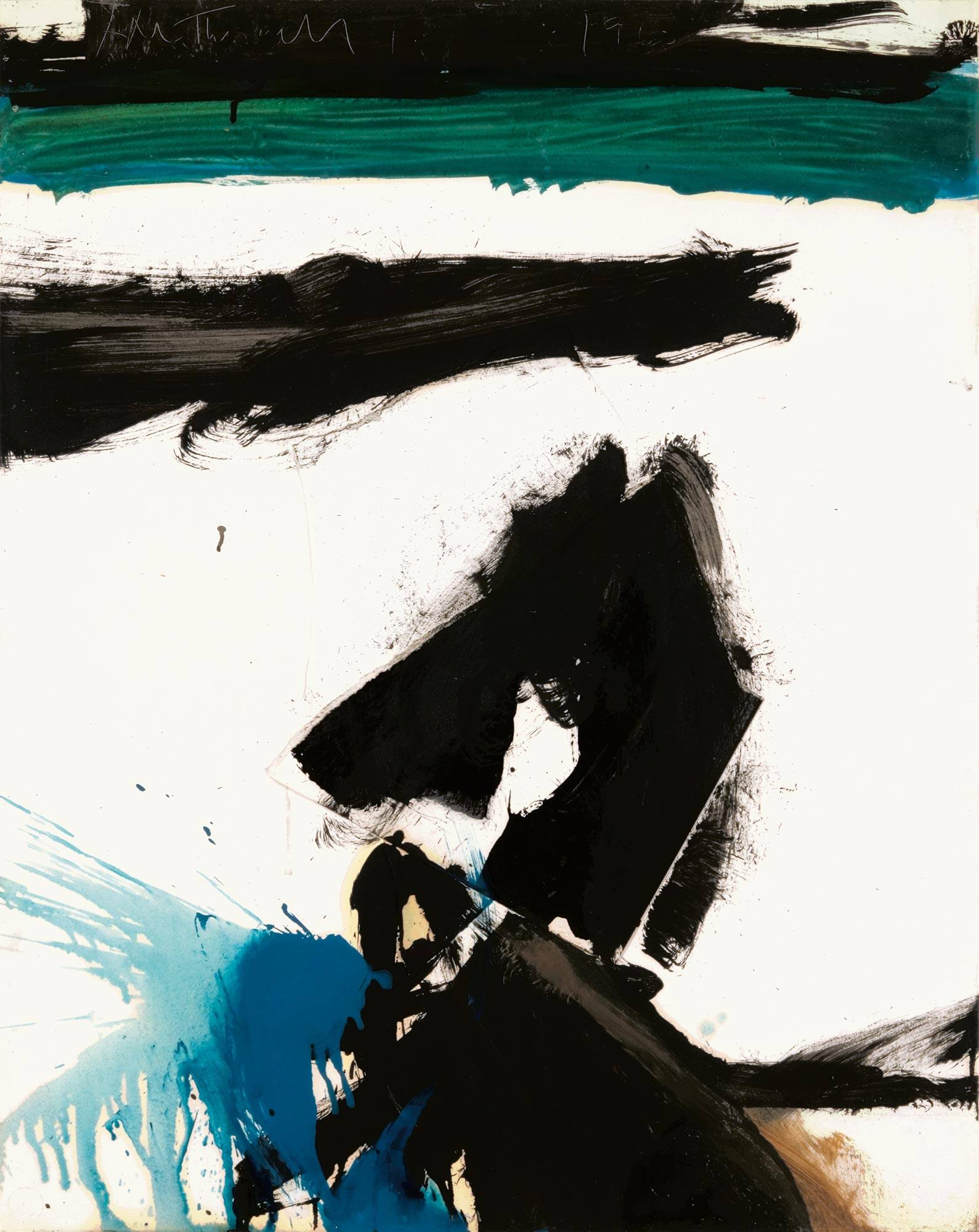Your browser is out-of-date!
Update your browser to view this website correctly. Update my browser now
Beside the Sea
by Claire Altizer
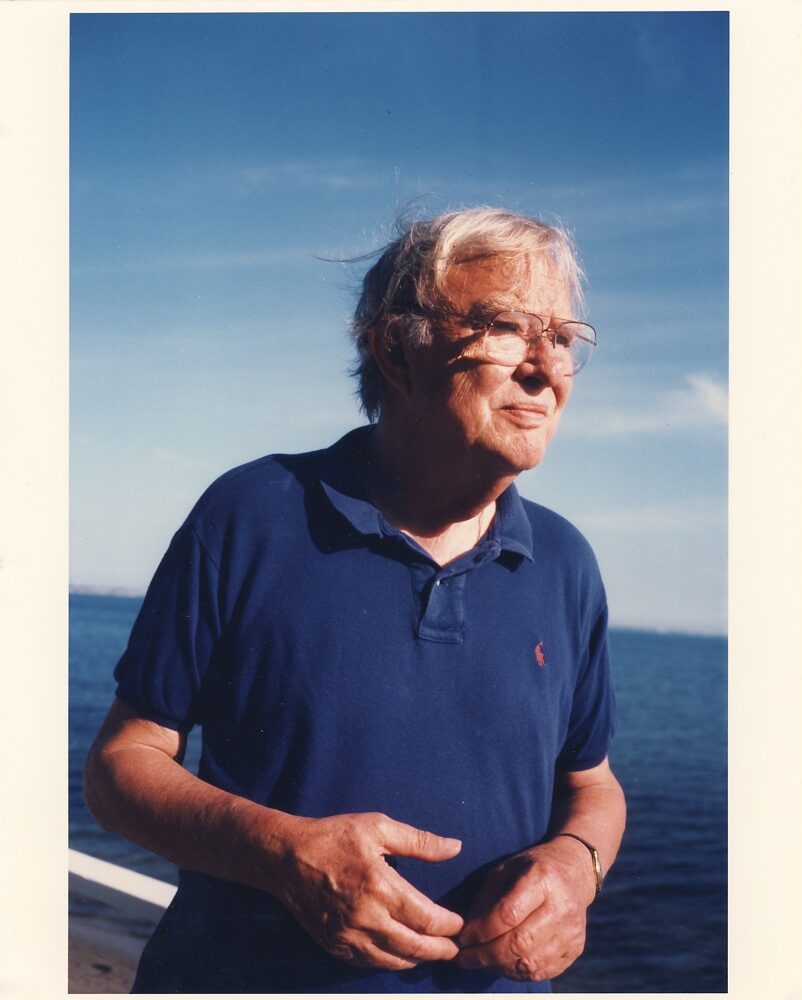
Robert Motherwell on the terrace behind his Provincetown studio, 1987.
Robert Motherwell had a deep love of the sea, and this virtual exhibition presents a range of works inspired by the sea that he created over a period of twenty-four years. These works show how Motherwell, deeply inspired by the natural world, was able to draw from it new ideas and techniques for his art.
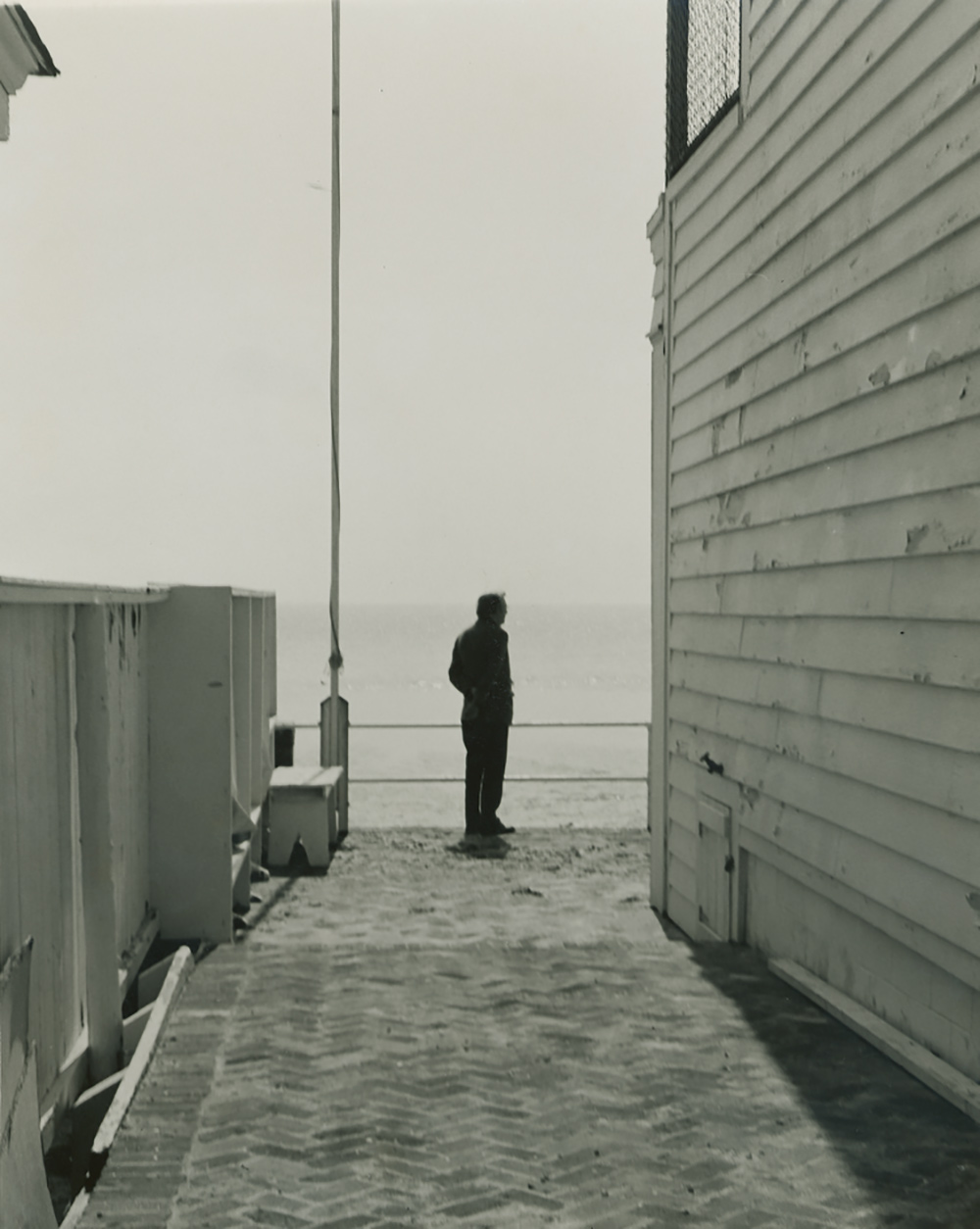
Motherwell looking out over the sea at Provincetown
Beginning in the early 1940s Motherwell lived and worked in Provincetown most summers until the end of his life. He would eventually settle into a house and studio right on the water there that he called the Sea Barn. After painting all day, he wrote, he would sometimes sit on the seaside steps behind the house, “hypnotized by the ever-changing tidal flats… I used to be struck by the beauty, the force and the grace, at high tide with a strong Southwest wind of the sea spray spurting up, sometimes taller than a man, above the seawall.”
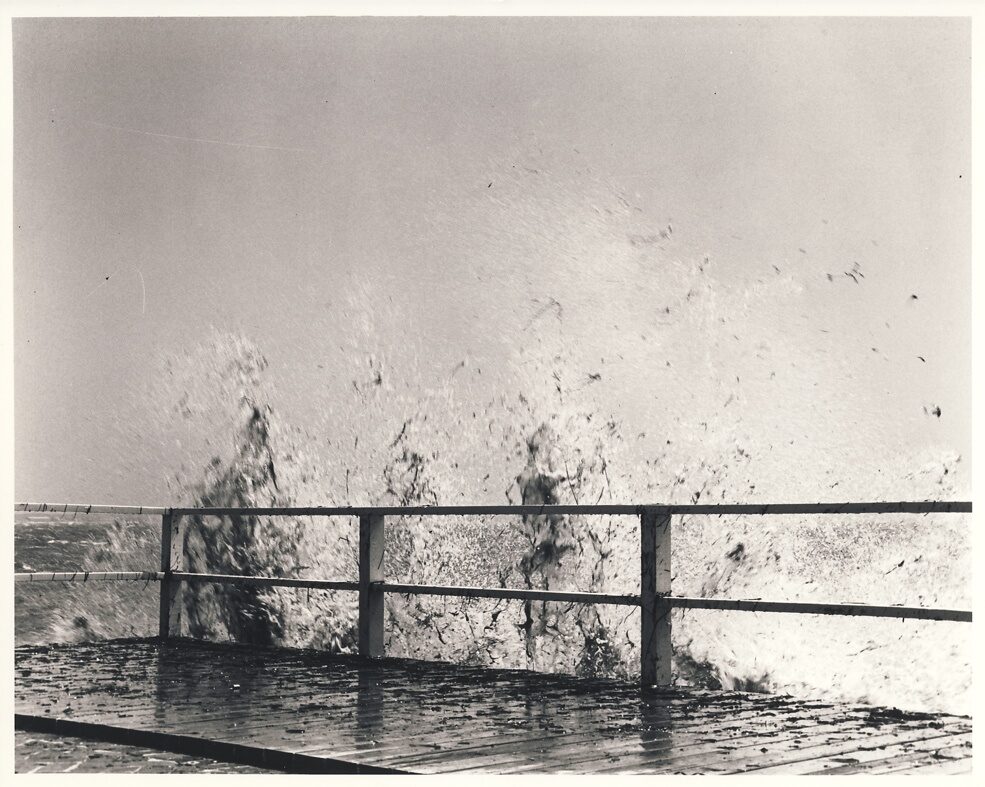
View of the sea from Motherwell’s Provincetown house and studio
Motherwell was fascinated not only by how the sea looked, but how it acted. In 1962, inspired by the forceful crash of the waves pounding against the sea wall behind his house, he began a series of oil paintings on paper called Beside the Sea. Each of the paintings in the Beside the Sea series employs a motif of one or more horizontal stripes of color – usually blue, black, ochre or green – that suggest the horizon line of the ocean meeting the shore. Above these horizontal bands there rises a fluidly arching splatter of paint, dashed across the paper much like a spray of water crashing against a sea wall.
The vigorous whip-like gestures Motherwell used to evoke the chaotic energy of sea spray became a kind of experiment in metaphoric verisimilitude. He was less interested in recreating the look of nature than in using the processes of nature to recreate its effects. “In the Beside the Sea series,” he later recalled, “I made the painted spray with such physical force that the strong rag paper split, and it was only when I found rag paper laminated with glue in five layers that the surface could take the full force of my shoulder, arm, hand, and brush without splitting. One might say that the true way to ‘imitate’ nature is to employ its own processes.”
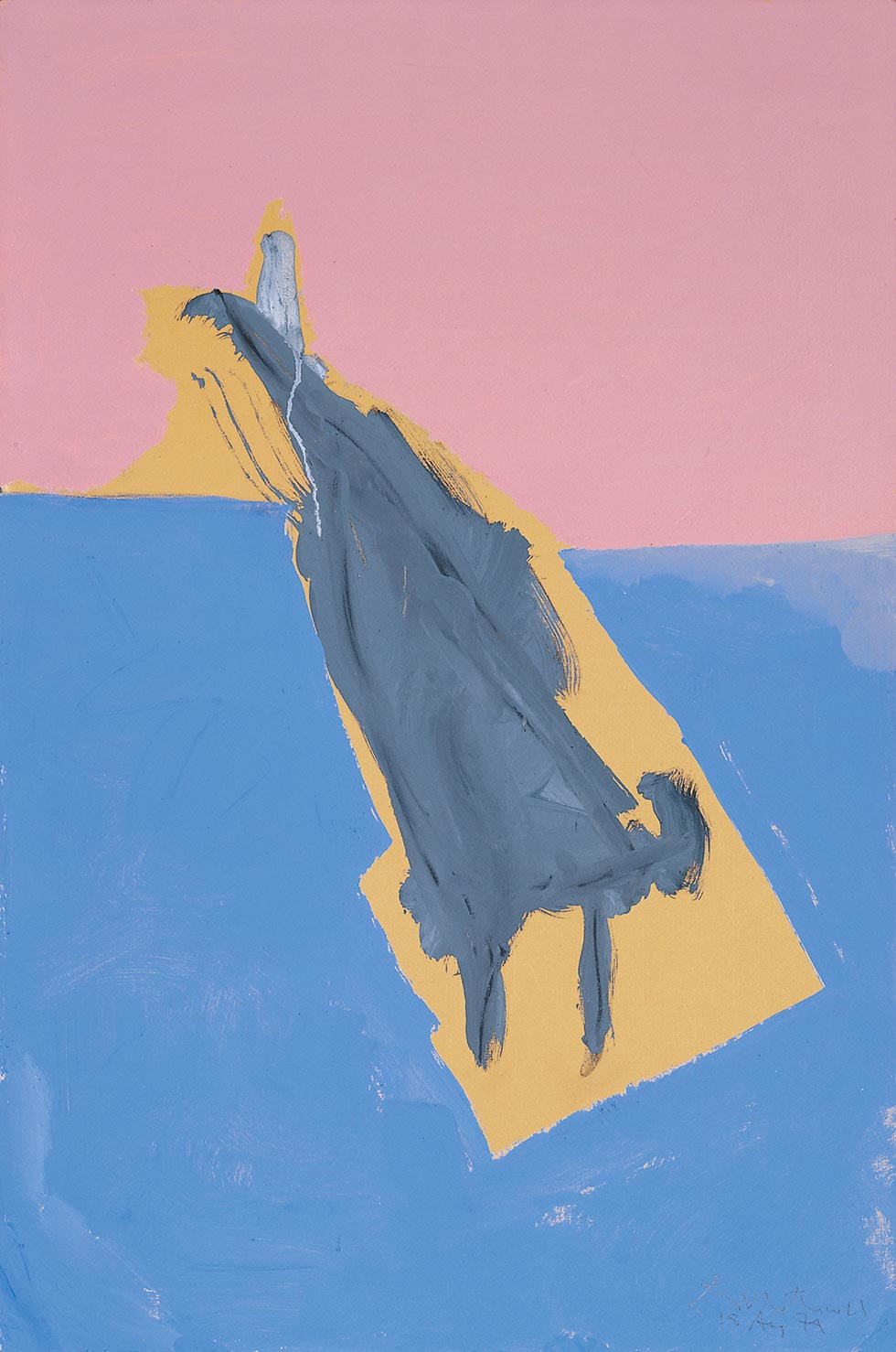
The Wild Duck, 1974, Acrylic and charcoal on Upson board, 36 ✕ 24 in.
The seaside environment inspired not only the Beside the Sea series but other works such as The Wild Duck, which Motherwell said was based on a glimpse of a wild duck “lifting itself from a blue sea.” The gray shape of the duck breaks the surface of the water, bursting into a pink sky that recalls the serene planes of his Open series.
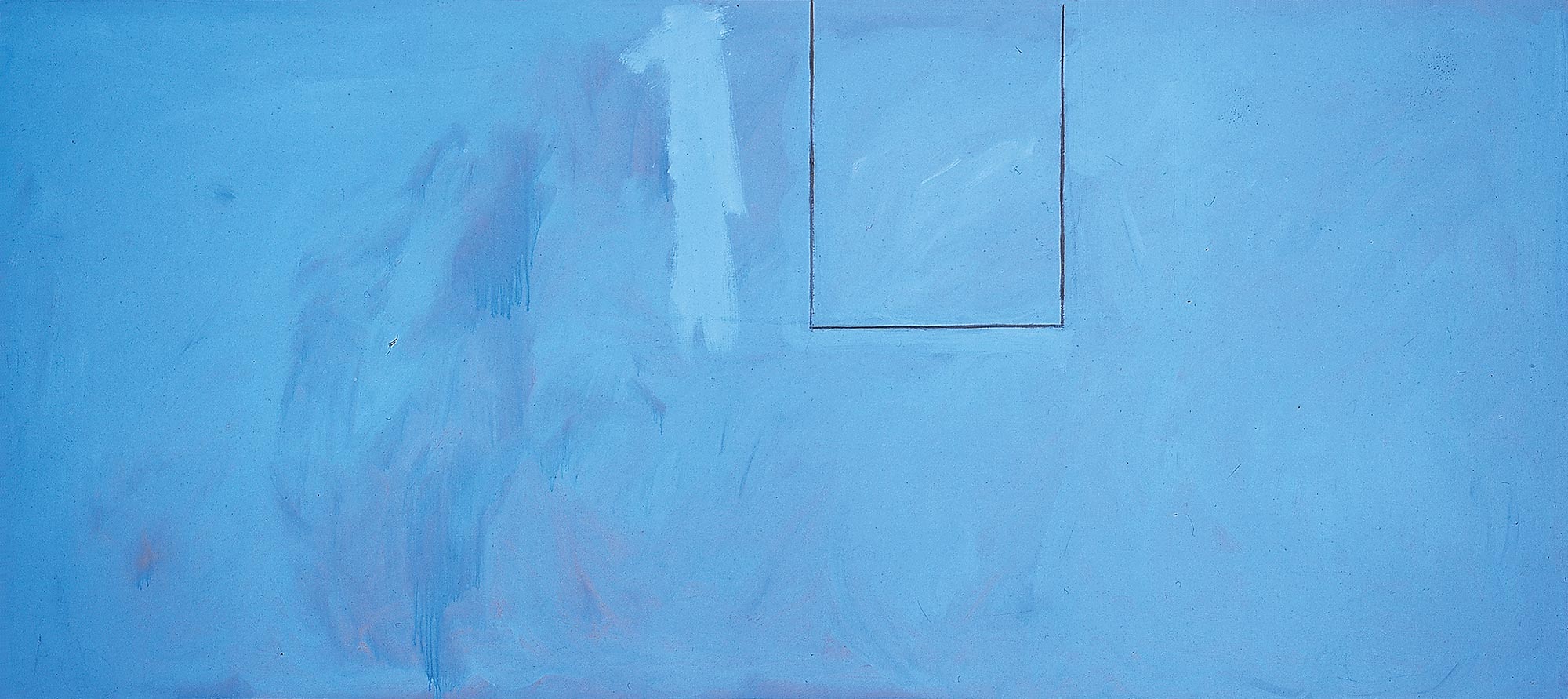
Summer Open with Mediterranean Blue, 1974
Acrylic and charcoal on canvas
48 ✕ 108 in.
A wonderful testament to the inventiveness and versatility with which Motherwell approached his wide range of visual motifs is evident in Summer Open with Mediterranean Blue, which is also featured in this exhibition. In this marvelously tranquil painting, the austerity of his Open series is adapted to evoke the calm expansiveness of the open sea.

